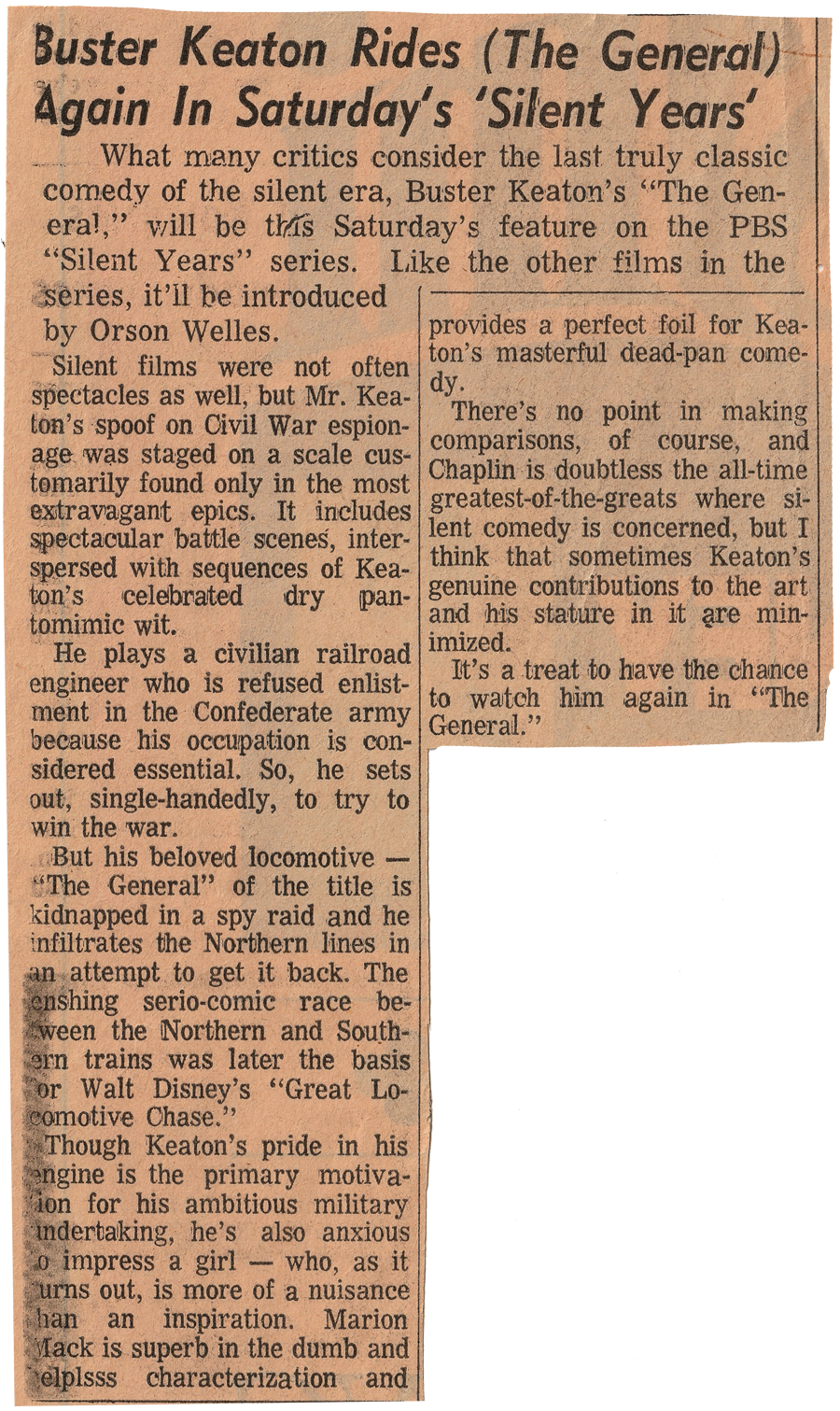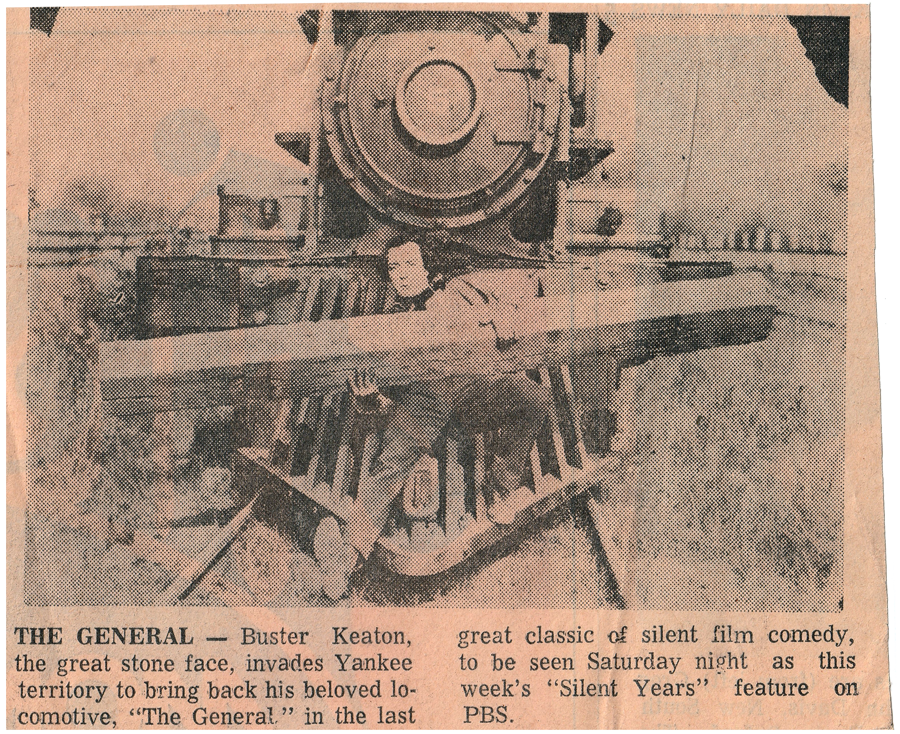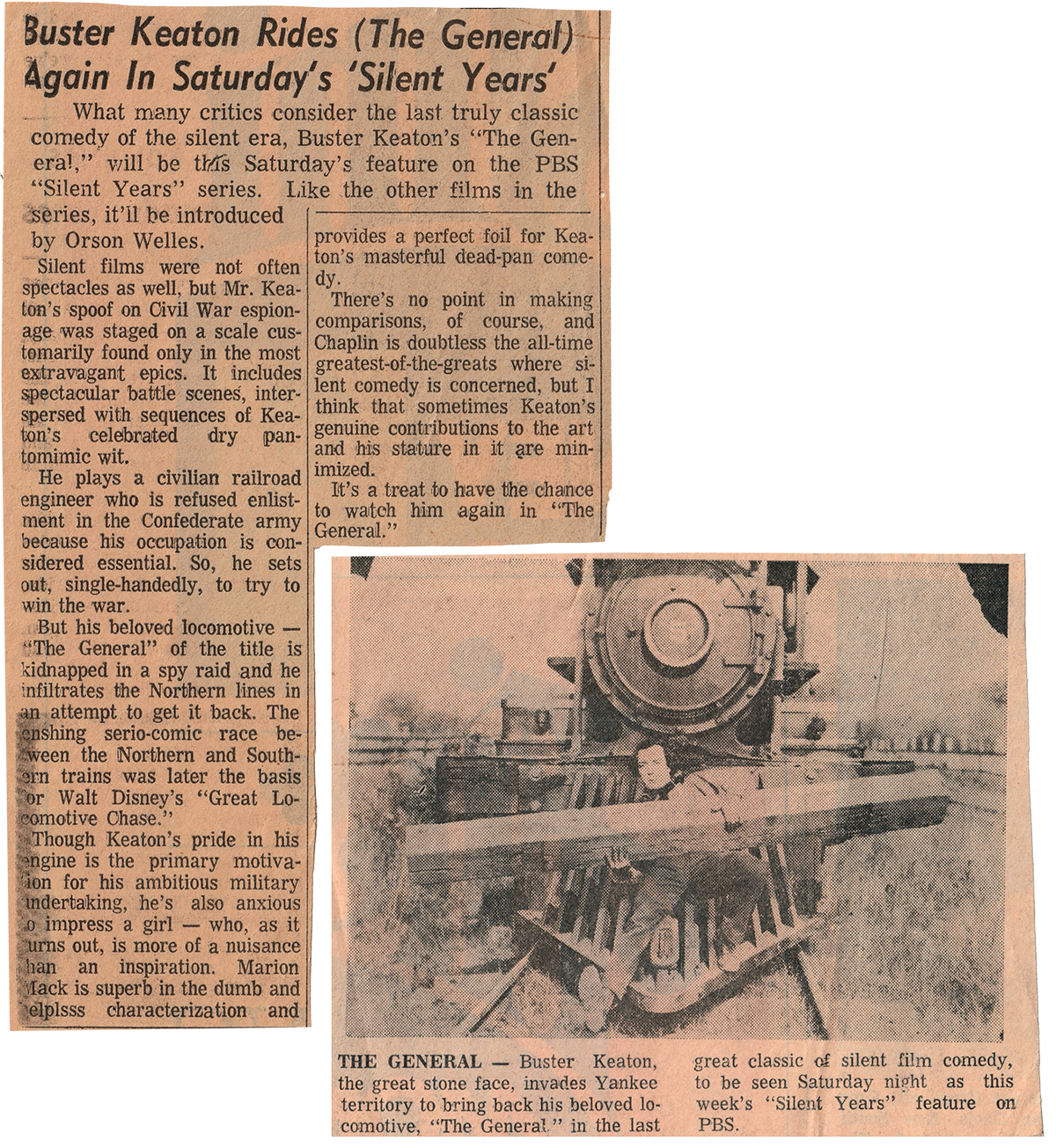
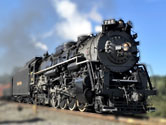



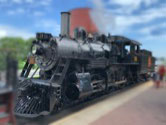
 |
The Great Locomotive ChaseThe Civil War's Andrews Raid |
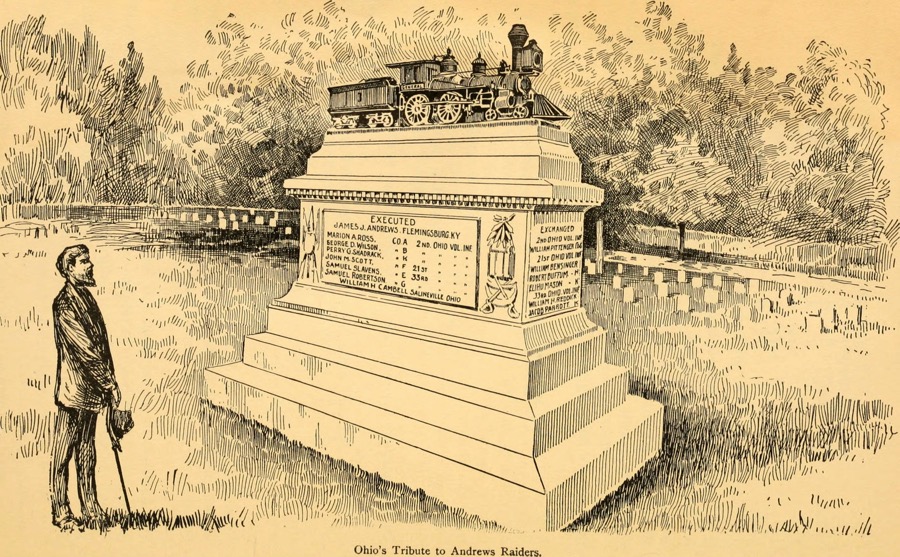
collection

“Jump off and scatter! Every man for himself!”
George Wilson, Perry Shadrack, and the 16 other Union men hiding in the locomotive boxcar recognized the voice as that of James Andrews, the civilian spy who commanded the clandestine mission they had volunteered for a few days prior. Each of them knew what jumping meant; trapped behind enemy lines in northern Georgia, escape back to Union forces in Tennessee would be almost impossible given that they had no maps of the surrounding terrain, and would be hunted by Confederate personnel on the train that was fast closing in on them.
However, with their stolen locomotive, the General, running out of steam, remaining on board would surely seal their fate. As grim as the odds were, bailing out was the best option left—six hours and 90 miles after hijacking the train near Kennesaw, GA. Within seconds, Wilson, Shadrack, and the others leaped from the General, scattering as quickly as possible into the surrounding wood line.
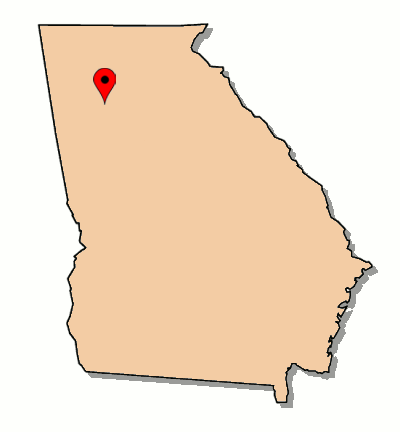
 he Great Locomotive Chase, also known as the Andrews' Raid, was a military exercise that occurred on April 12, 1862, in northwestern Georgia during the American Civil War. Volunteers from the federal Union Army, led by civilian scout James J. Andrews, commandeered a locomotive -- Western & Atlantic Railroad's The General -- and took it northward toward Chattanooga, Tennessee, along their way doing as much damage as possible to the vital Western & Atlantic mainline between Atlanta to Chattanooga. The Federals were pursued by Confederate forces first on foot, then later on a succession of handcars and locomotives -- including, by the end, a sister W&A locomotive The Texas.
he Great Locomotive Chase, also known as the Andrews' Raid, was a military exercise that occurred on April 12, 1862, in northwestern Georgia during the American Civil War. Volunteers from the federal Union Army, led by civilian scout James J. Andrews, commandeered a locomotive -- Western & Atlantic Railroad's The General -- and took it northward toward Chattanooga, Tennessee, along their way doing as much damage as possible to the vital Western & Atlantic mainline between Atlanta to Chattanooga. The Federals were pursued by Confederate forces first on foot, then later on a succession of handcars and locomotives -- including, by the end, a sister W&A locomotive The Texas.
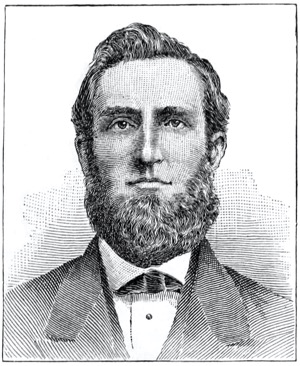 Because the Union raiders cut telegraph wires as they went along, the Confederates in pursuit of The General could not send warnings ahead to Southern forces along the railway. Nevertheless, short on wood and water, The General eventually lost steam and came to a stop north of Ringold, Georgia -- some 87 miles from their starting point in Big Shanty (Kennesaw), Georgia. Confederates eventually captured the raiders and quickly executed some as spies, including Andrews; some others were able to escape capture. Some of the Union raiders were the first to be awarded the Medal of Honor by the United States Congress for their actions. Andrews himself, a civilian, was not elegible.
Because the Union raiders cut telegraph wires as they went along, the Confederates in pursuit of The General could not send warnings ahead to Southern forces along the railway. Nevertheless, short on wood and water, The General eventually lost steam and came to a stop north of Ringold, Georgia -- some 87 miles from their starting point in Big Shanty (Kennesaw), Georgia. Confederates eventually captured the raiders and quickly executed some as spies, including Andrews; some others were able to escape capture. Some of the Union raiders were the first to be awarded the Medal of Honor by the United States Congress for their actions. Andrews himself, a civilian, was not elegible.
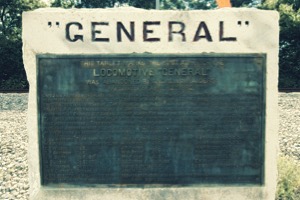 The nearly 90-mile stretch of railroad on which the Andrews' Raid took place is still in operation today as a CSX Transportation mainline between Atlanta and Chattanooga. After the war, the State of Georgia-owned Western & Atlantic was leased twice to the Nashville, Chattanooga & St. Louis Railroad, which in 1957 would be absorbed by the growing Louisville & Nashville system. L&N itself would become part of the Family Lines conglomerate, which would form the core of CSX Transportation in the early 1980s. Various historical markers can still be found along the Great Locomotive Chase right-of-way.
The nearly 90-mile stretch of railroad on which the Andrews' Raid took place is still in operation today as a CSX Transportation mainline between Atlanta and Chattanooga. After the war, the State of Georgia-owned Western & Atlantic was leased twice to the Nashville, Chattanooga & St. Louis Railroad, which in 1957 would be absorbed by the growing Louisville & Nashville system. L&N itself would become part of the Family Lines conglomerate, which would form the core of CSX Transportation in the early 1980s. Various historical markers can still be found along the Great Locomotive Chase right-of-way.
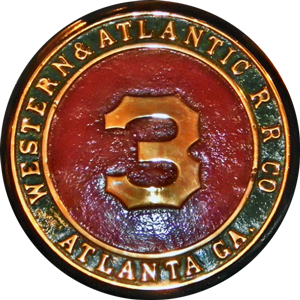 Likewise, the principle Western & Atlantic locomotives involved in the Chase both survive today, each cosmetically restored. After multiple owners, leases, rebuilds, and legal squabbles, The Texas eventually found a retirement caretaker in the City of Atlanta. After many years on display at the city's Grant Park and Cyclorama exhibit, The Texas has been externally restored to its War-era look and is on display at the Atlanta History Center in Buckhead, Georgia. Similarly, the better-known General was also spared from the scrapper's torch following its retirement from road service in the late 1800s. W&A lessor Nashville, Chattanooga & St. Louis displayed the locomotive in its Chattanooga Union Station for years, until successor Louisville & Nashville rehabilitated #3 for operation during the years leading up to the Civil War centennial in the 1960s. After a legal battle over the rightful ownership of the engine, it eventually founds its way to state ownership and permanent display in Kennesaw, Georgia, just 100 yards from the starting point of the Chase. Today that museum is known as the Southern Museum of Civil War & Locomotive History.
Likewise, the principle Western & Atlantic locomotives involved in the Chase both survive today, each cosmetically restored. After multiple owners, leases, rebuilds, and legal squabbles, The Texas eventually found a retirement caretaker in the City of Atlanta. After many years on display at the city's Grant Park and Cyclorama exhibit, The Texas has been externally restored to its War-era look and is on display at the Atlanta History Center in Buckhead, Georgia. Similarly, the better-known General was also spared from the scrapper's torch following its retirement from road service in the late 1800s. W&A lessor Nashville, Chattanooga & St. Louis displayed the locomotive in its Chattanooga Union Station for years, until successor Louisville & Nashville rehabilitated #3 for operation during the years leading up to the Civil War centennial in the 1960s. After a legal battle over the rightful ownership of the engine, it eventually founds its way to state ownership and permanent display in Kennesaw, Georgia, just 100 yards from the starting point of the Chase. Today that museum is known as the Southern Museum of Civil War & Locomotive History.
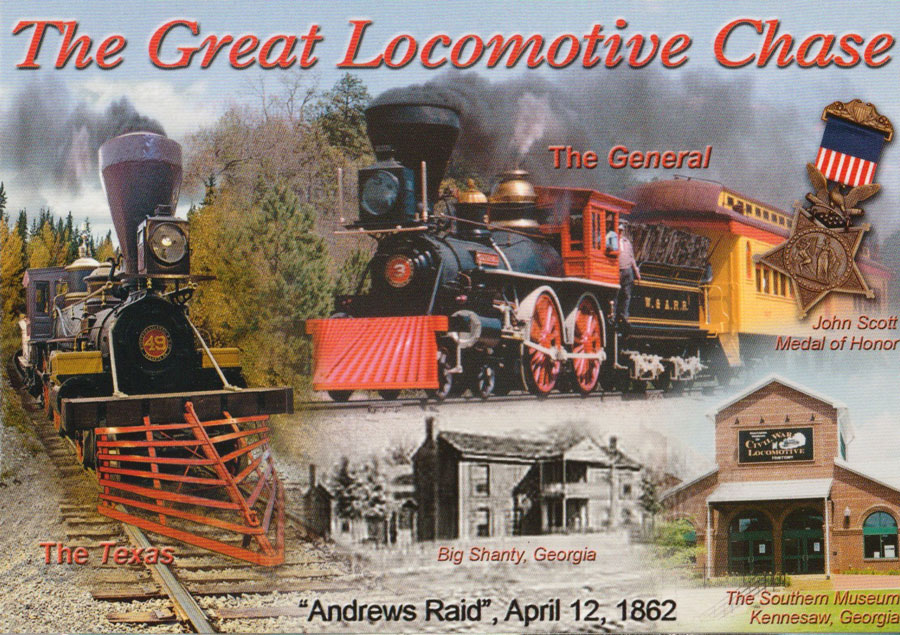
postcard / collection
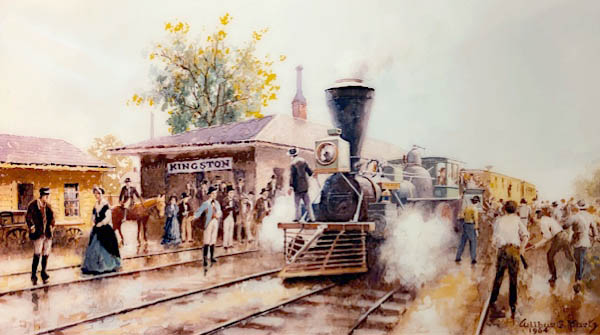
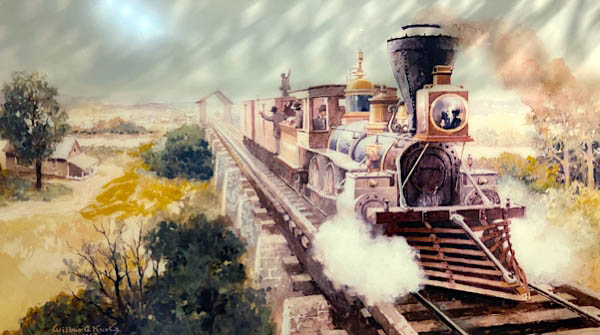
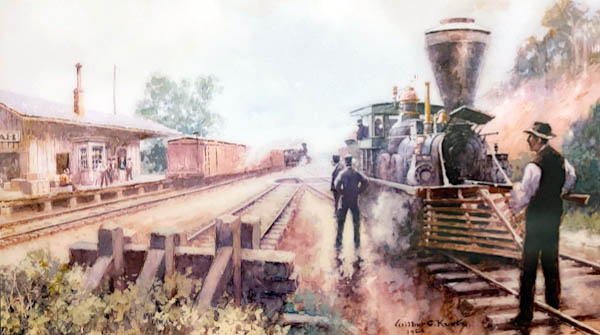
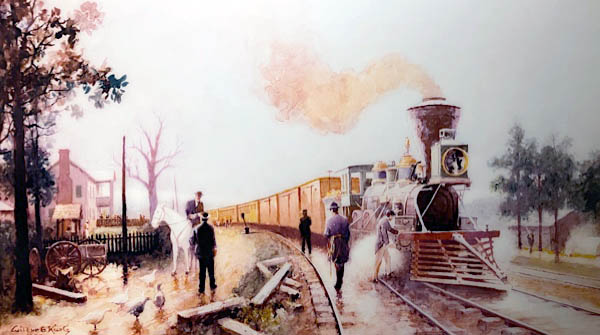
museum wall displays / Oct 2021 / RWH

See also these related pages:
- Southern Museum of Civil War & Locomotive History in Preservation
- Atlanta History Center in Preservation
- Louisville & Nashville Railroad in Mainlines
 Louisville & Nashville brochure
Louisville & Nashville brochure
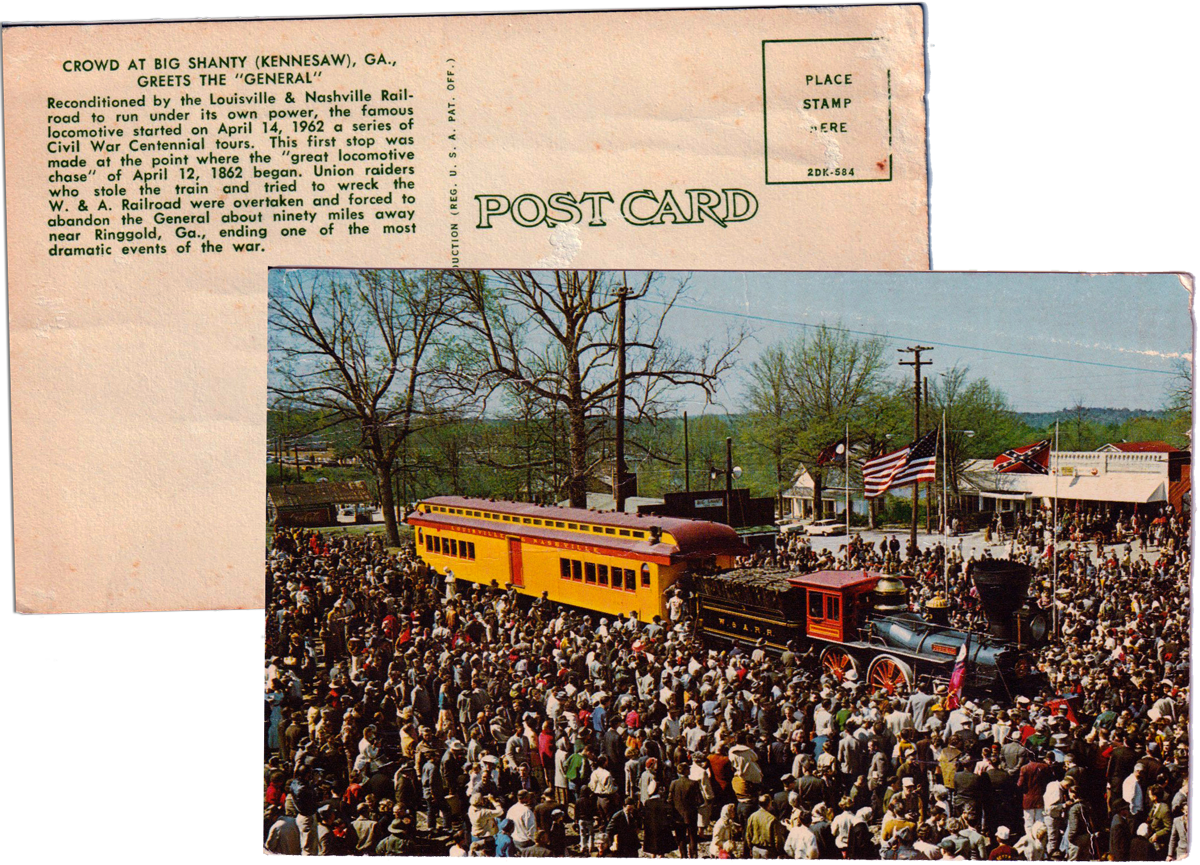
postcard / collection
 n 1957, the Louisville & Nashville Railroad acquired the Nashville, Chattanooga & St. Louis, including its lease of the Western & Atlantic, and began plans to restore The General to operation for the Civil War Centennial. Throughout the 1960s, the engine pulled Louisville & Nashville combine #665 under its own power as it traveled to various places across the eastern United States, including the 1964 New York World's Fair. To commemorate the locomotive's restoration, the L&N produced a pamphlet featuring maps, photos, and a historical overview of the Andrews' Raid.
n 1957, the Louisville & Nashville Railroad acquired the Nashville, Chattanooga & St. Louis, including its lease of the Western & Atlantic, and began plans to restore The General to operation for the Civil War Centennial. Throughout the 1960s, the engine pulled Louisville & Nashville combine #665 under its own power as it traveled to various places across the eastern United States, including the 1964 New York World's Fair. To commemorate the locomotive's restoration, the L&N produced a pamphlet featuring maps, photos, and a historical overview of the Andrews' Raid.
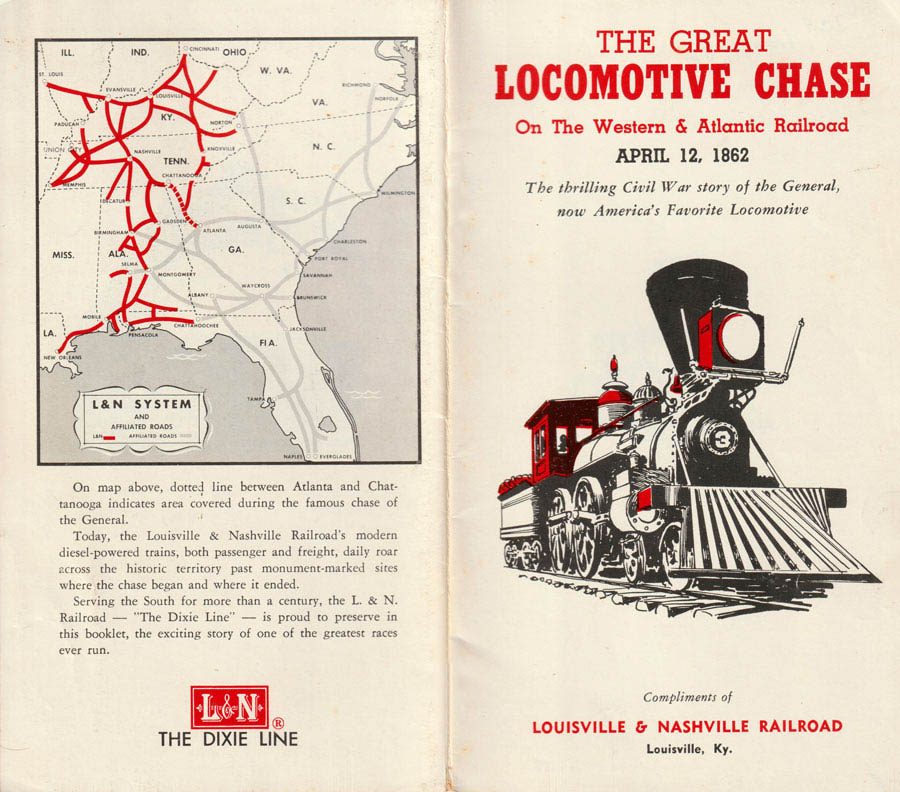
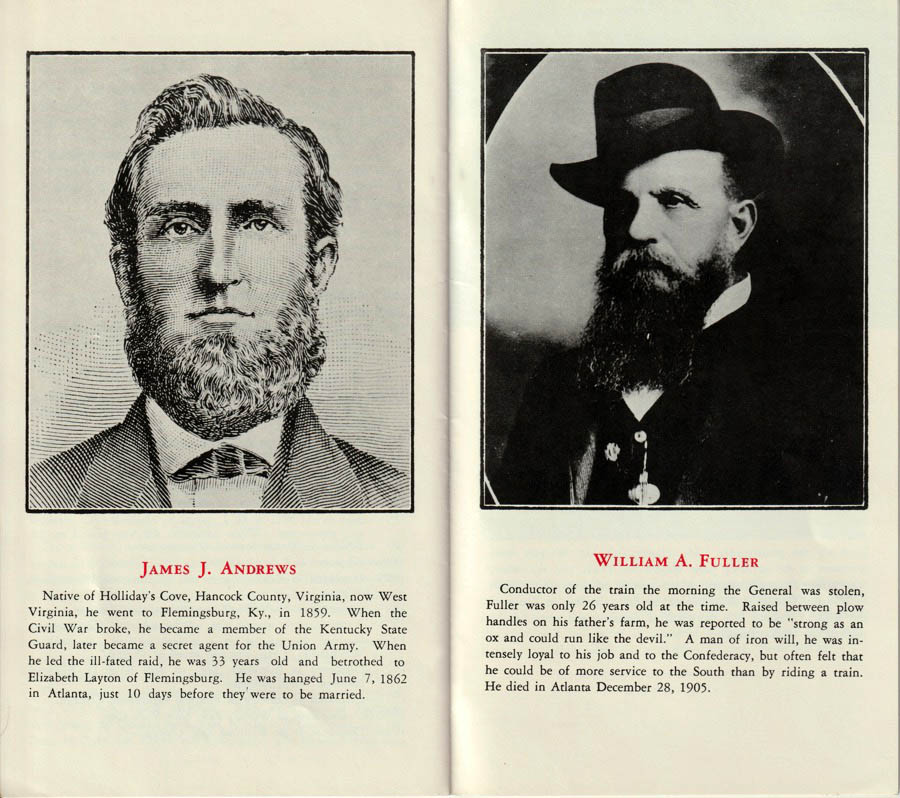
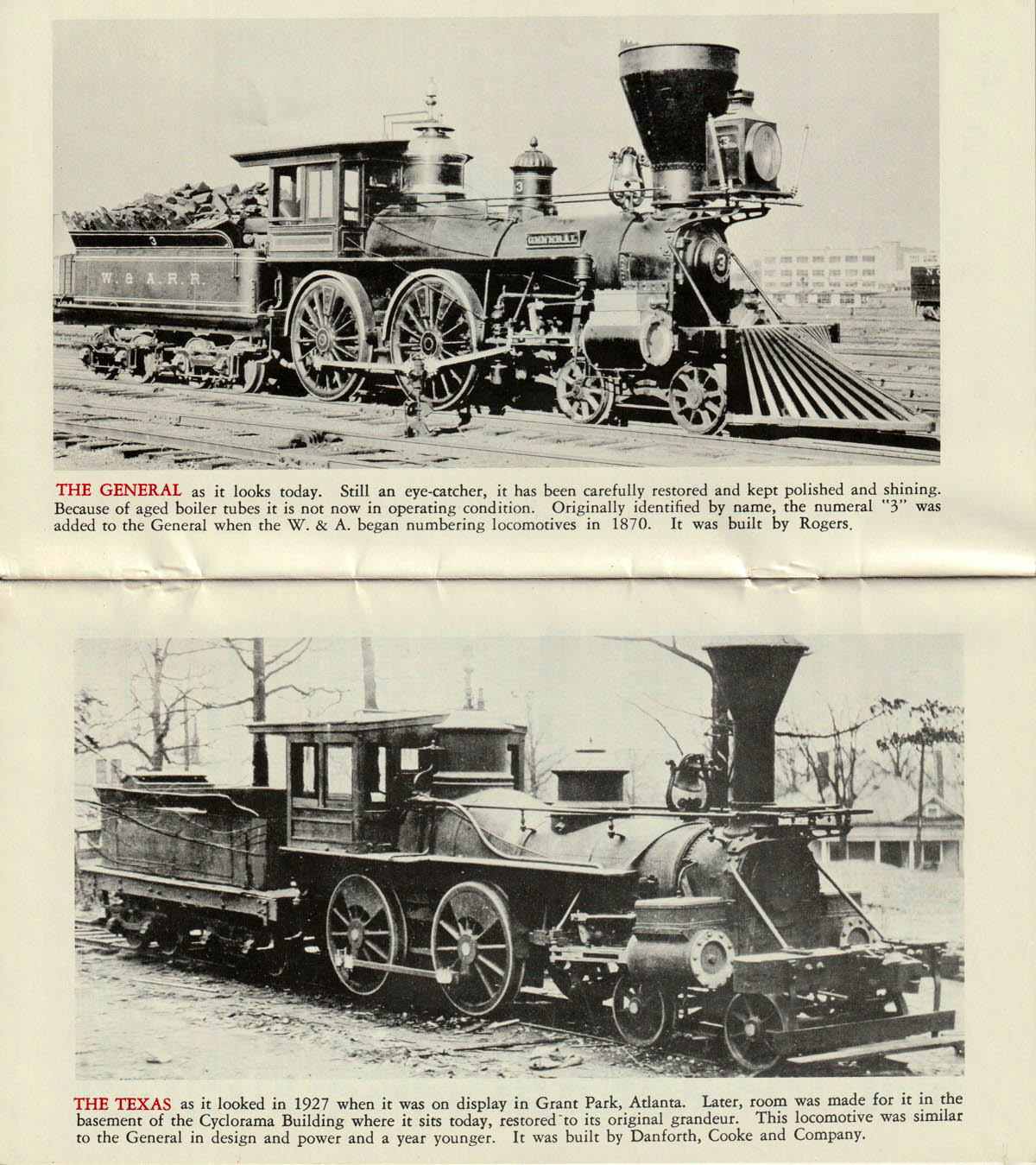
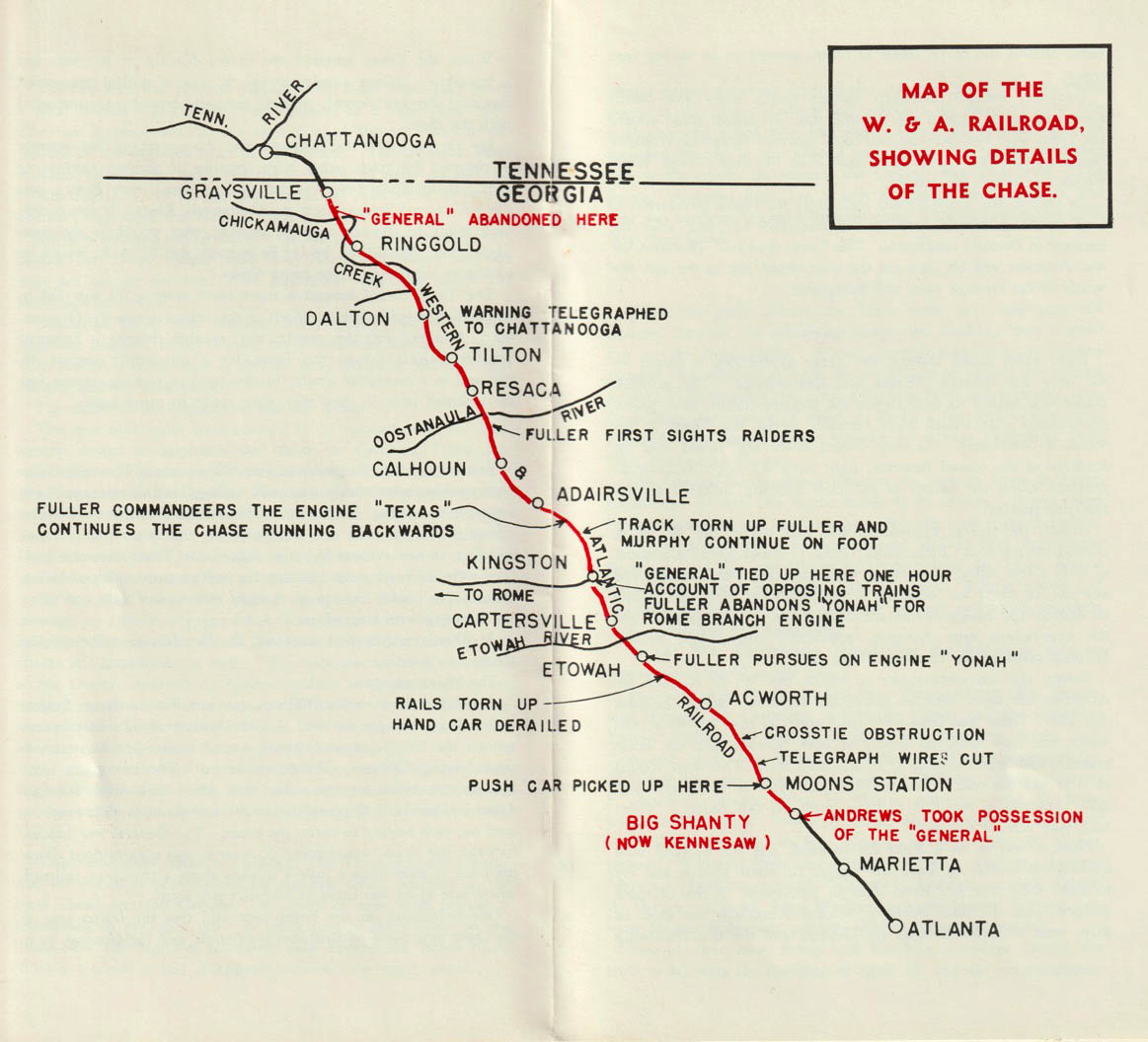
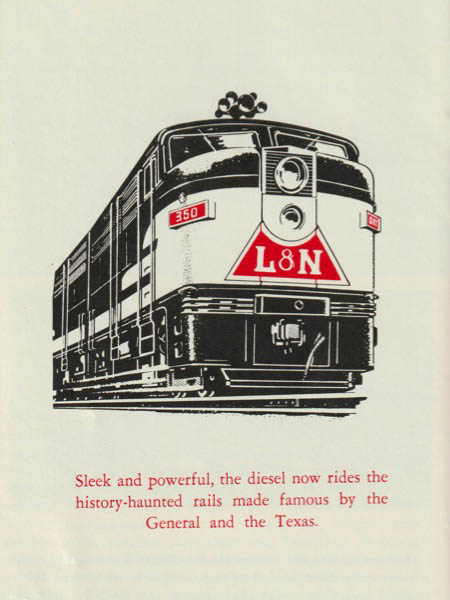

postcard / collection
All pages above from pamphlet secured by JCH during General tours / c. 1964 / collection
"The General"
 estern & Atlantic Railroad's The General is on permanent display at the Southern Museum of Civil War & Locomotive History in Kennesaw, Georgia. The museum was previously known as the Big Shanty Museum, then the Kennesaw Civil War Museum. The locomotive belongs to the State of Georgia.
estern & Atlantic Railroad's The General is on permanent display at the Southern Museum of Civil War & Locomotive History in Kennesaw, Georgia. The museum was previously known as the Big Shanty Museum, then the Kennesaw Civil War Museum. The locomotive belongs to the State of Georgia.
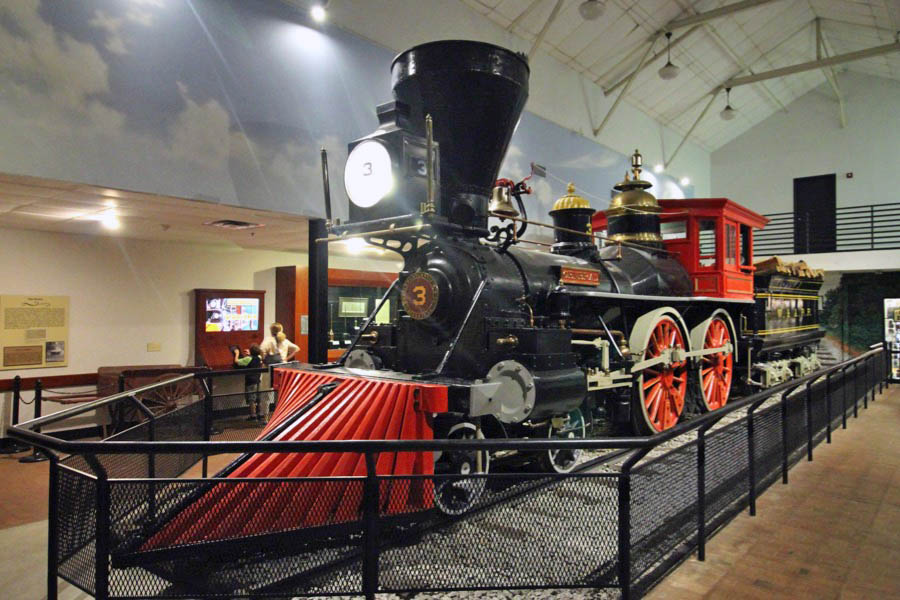
Western & Atlantic #3 "General"
Kennesaw, Ga / Jun 2019 / RWH


Western & Atlantic #3 "General"
rebuilt after Civil War damage
to Western & Atlantic #39, later #3
leased to Atlanta & Florida Railroad
to Nashville, Chattanooga & St. Louis
to Louisville & Nashville
to State of Georgia
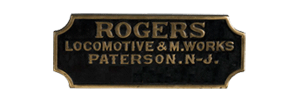
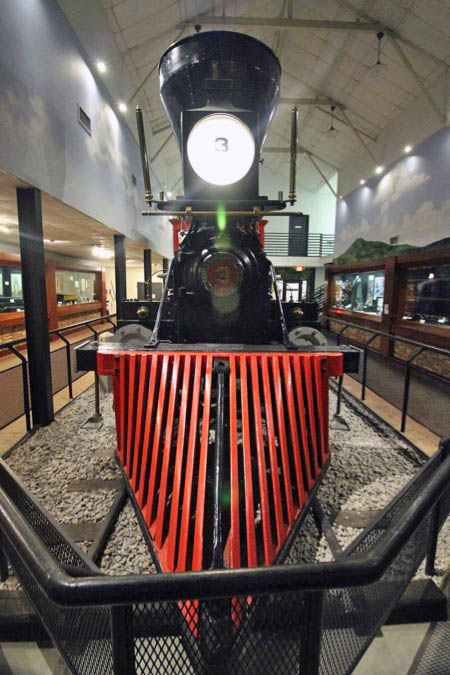
Jun 2019 / RWH
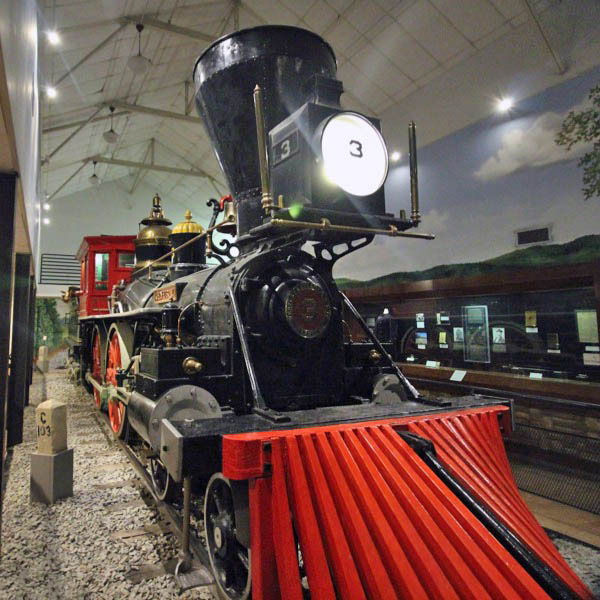
Jun 2019 / RWH
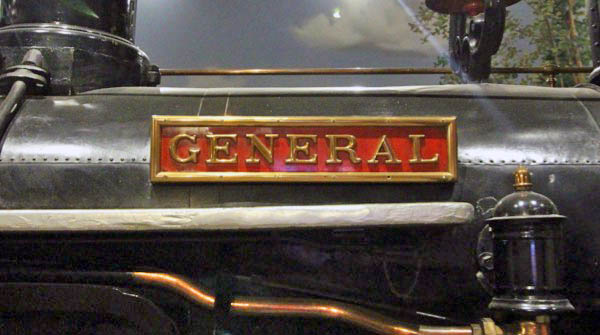
Jun 2019 / RWH
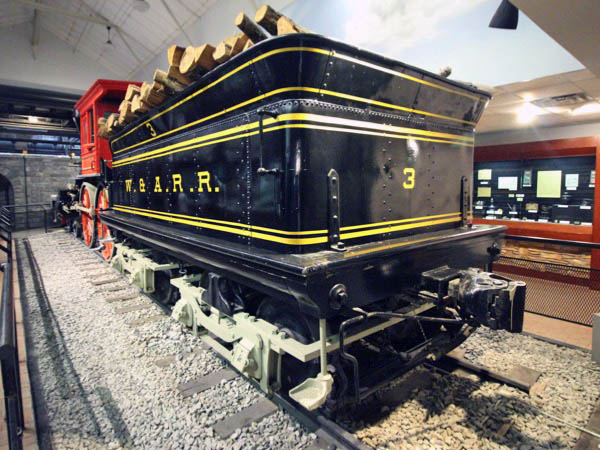
Jun 2019 / RWH
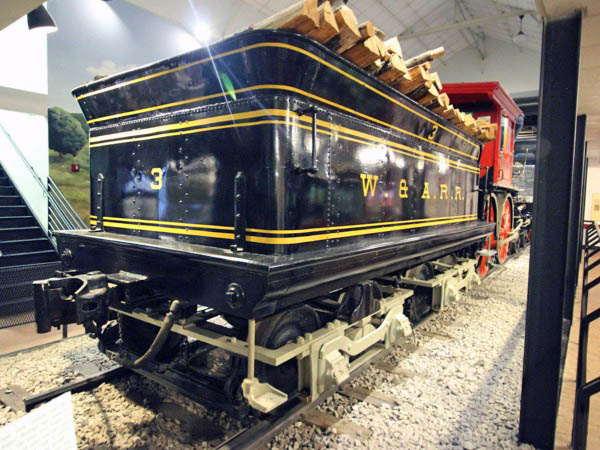
Jun 2019 / RWH
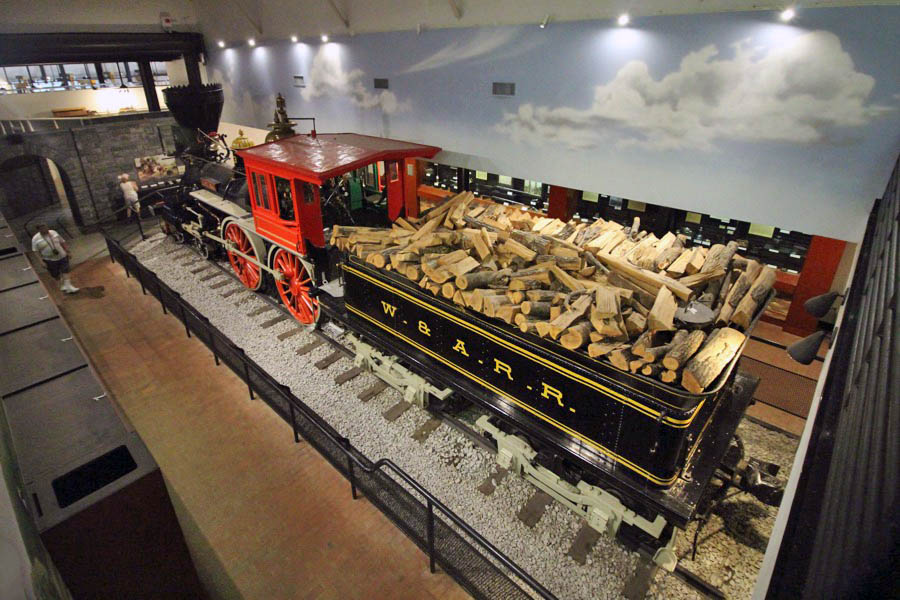
Jun 2019 / RWH
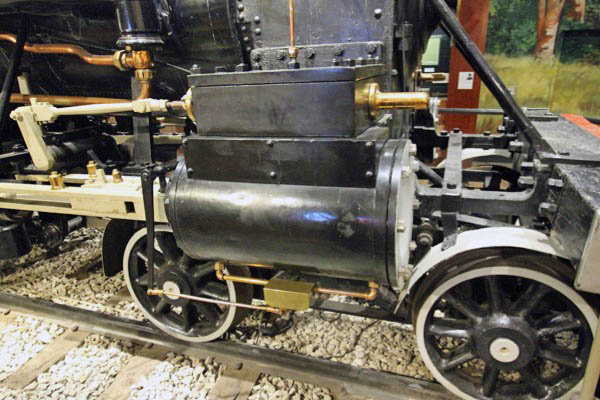
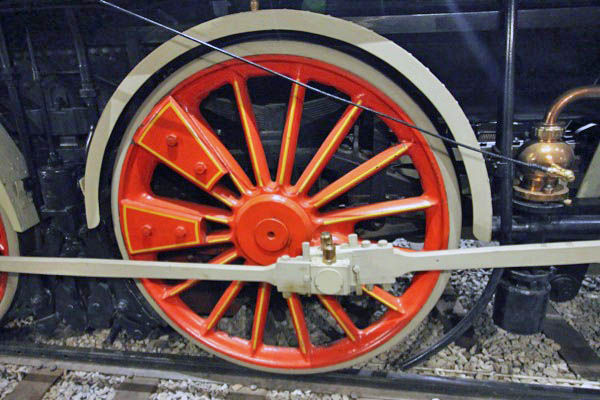
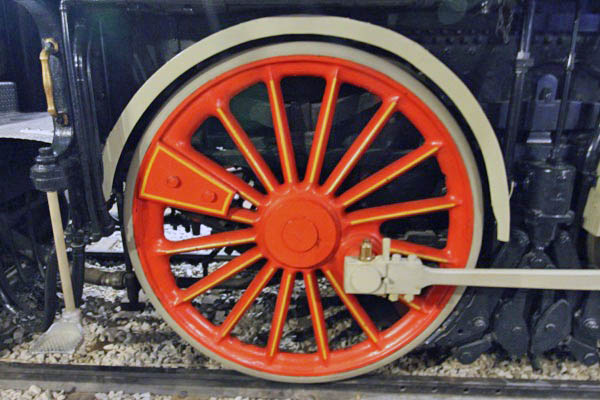
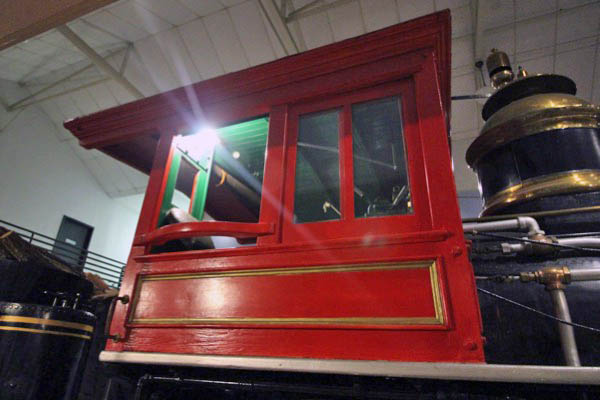
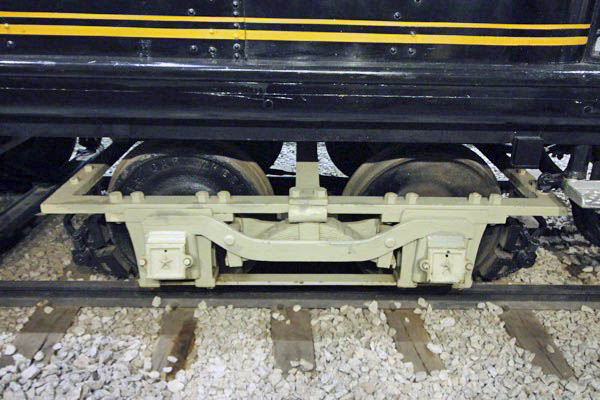
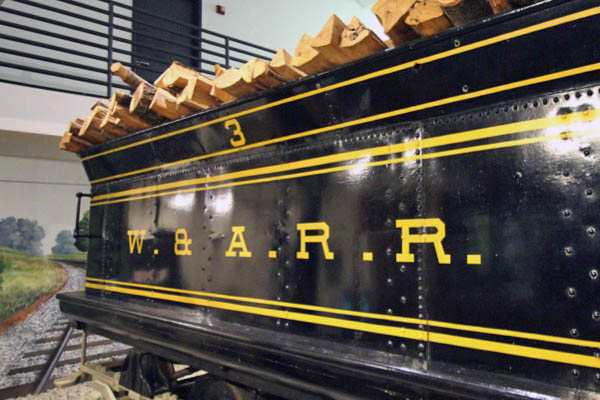
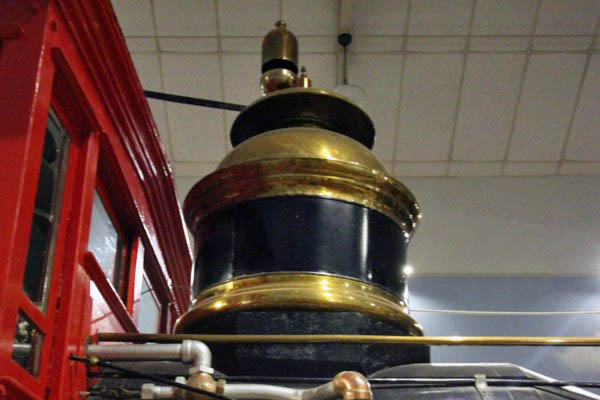
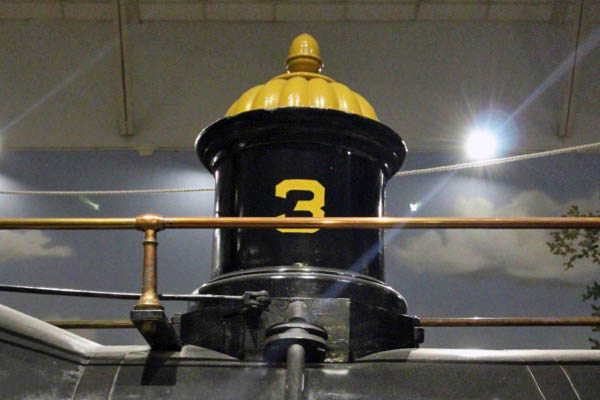
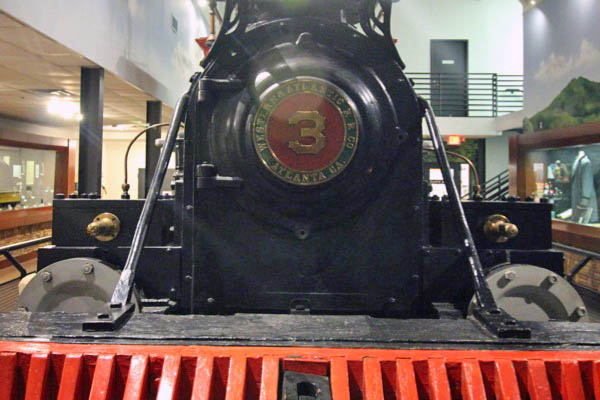
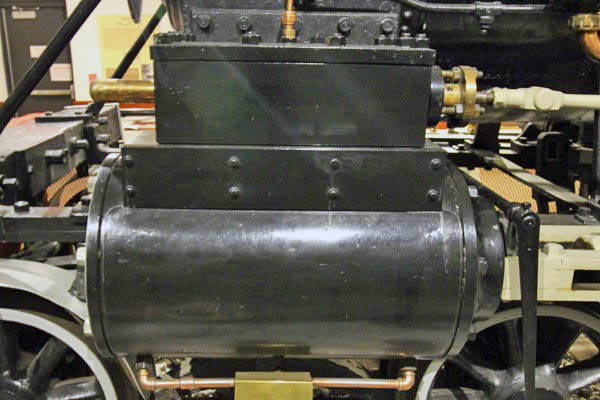
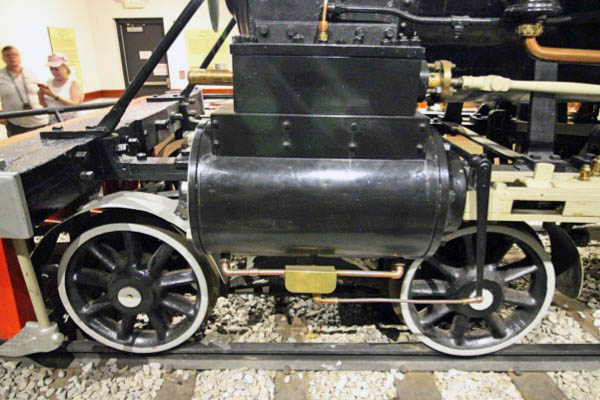
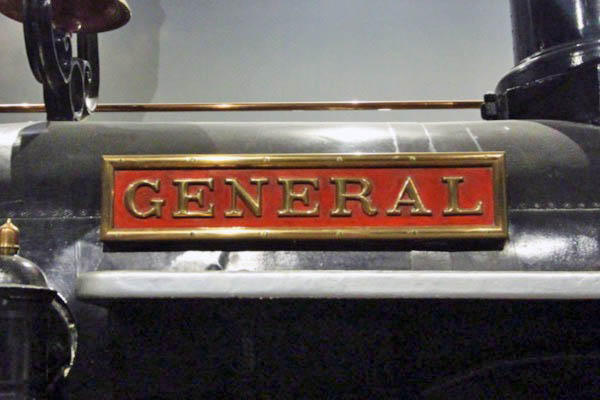
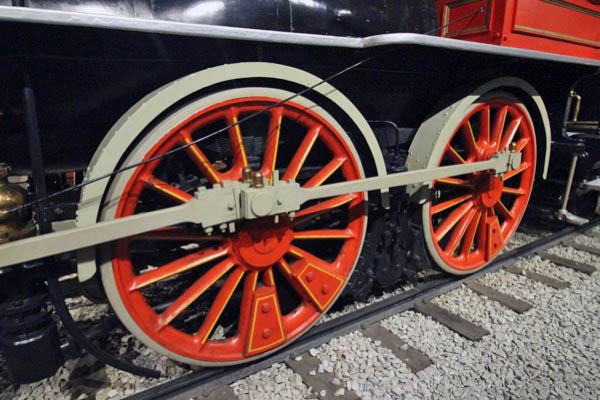
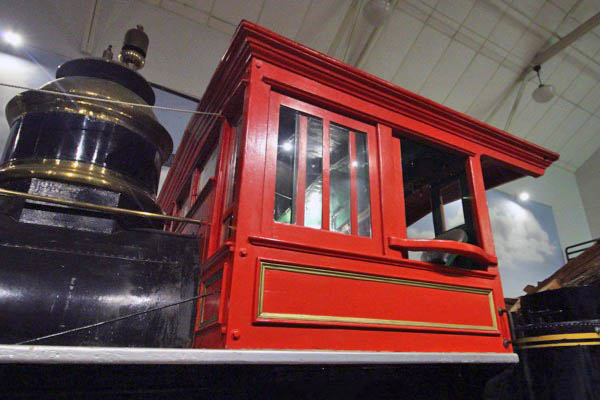
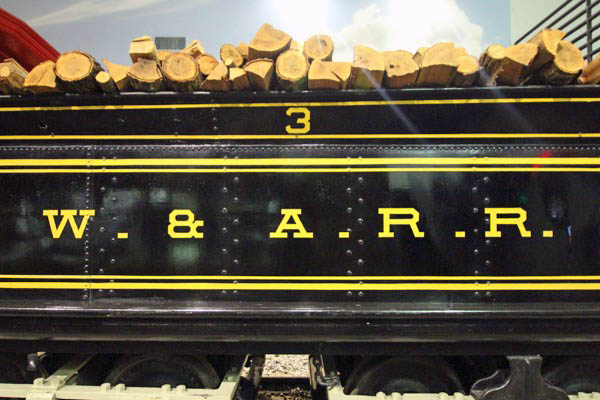
Jun 2019 / RWH
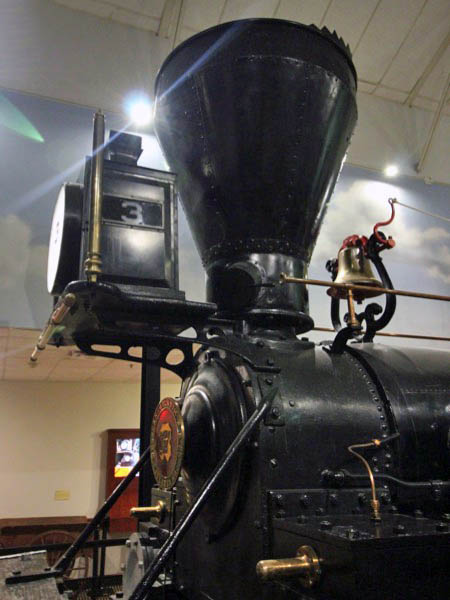
Jun 2019 / RWH
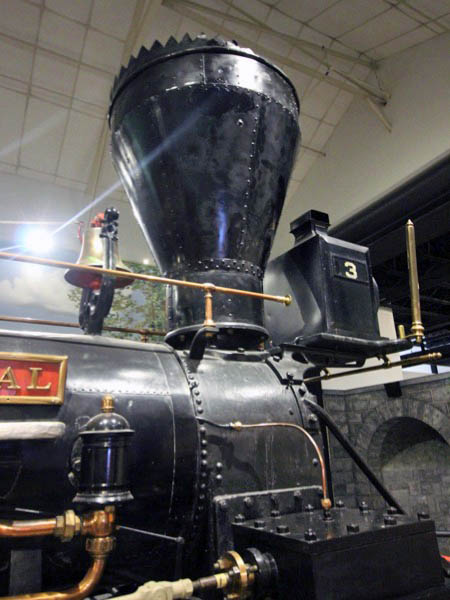
Jun 2019 / RWH
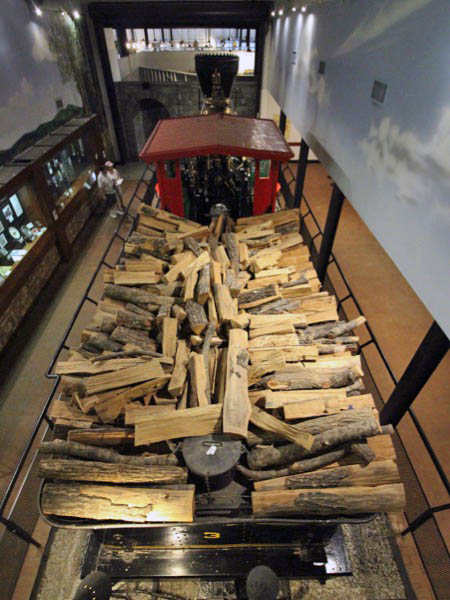
Jun 2019 / RWH
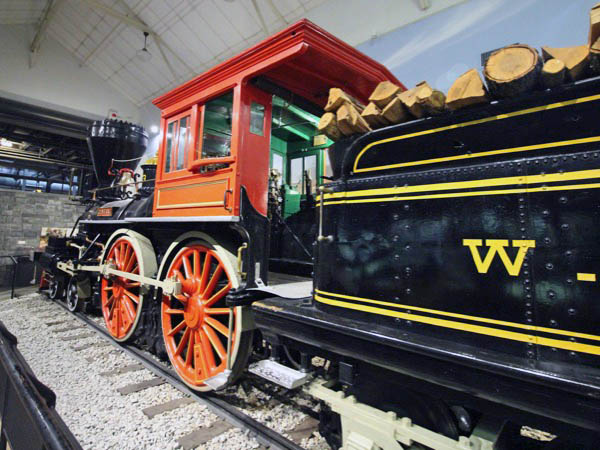
Jun 2019 / RWH
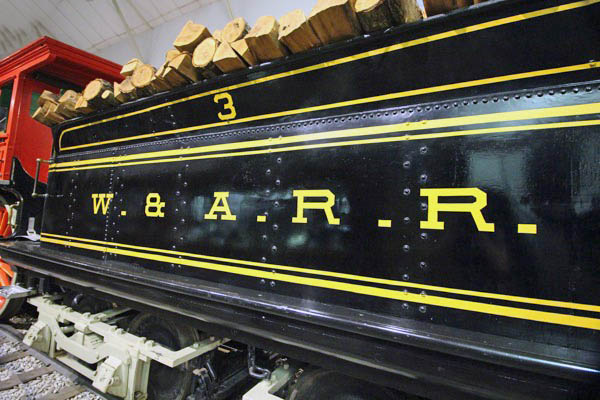
Jun 2019 / RWH
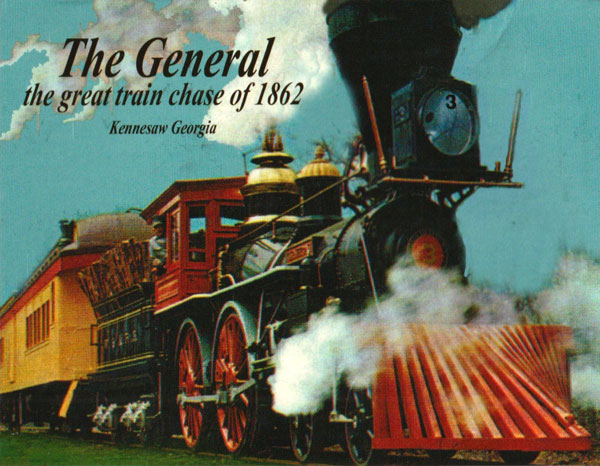
postcard / collection
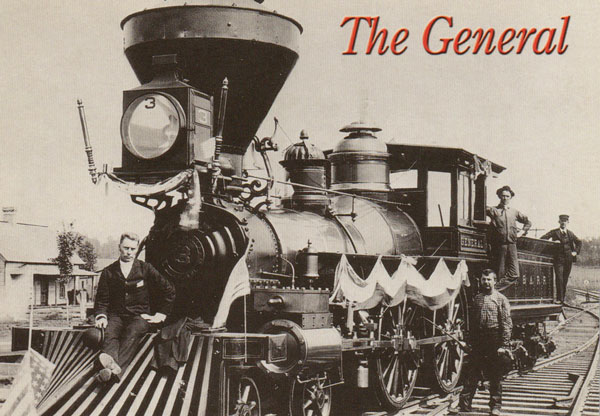
postcard / collection
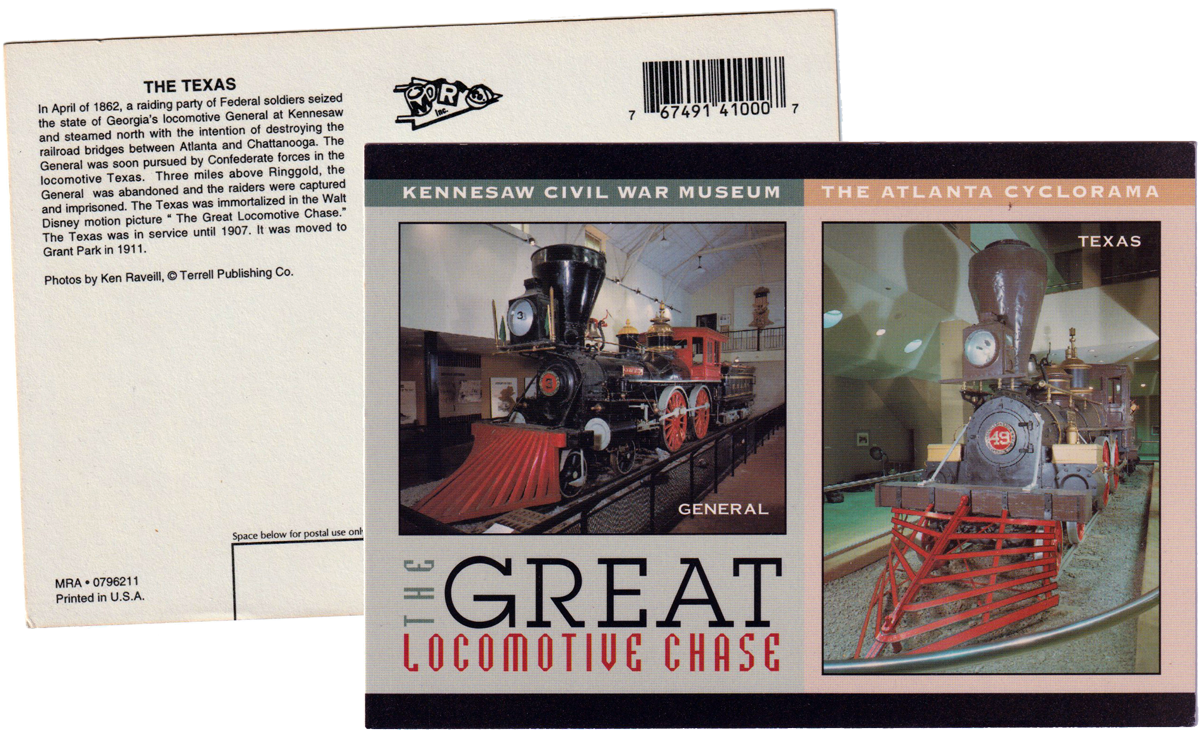
postcard / collection
"The Texas"
 estern & Atlantic Railroad's The Texas is on permanent display at the Atlanta History Center in the Buckhead district of Atlanta, Ga. The locomotive was previously displayed at the former Atlanta Cyclorama exhibit in the city's Grant Park. The locomotive belongs to the City of Atlanta.
estern & Atlantic Railroad's The Texas is on permanent display at the Atlanta History Center in the Buckhead district of Atlanta, Ga. The locomotive was previously displayed at the former Atlanta Cyclorama exhibit in the city's Grant Park. The locomotive belongs to the City of Atlanta.
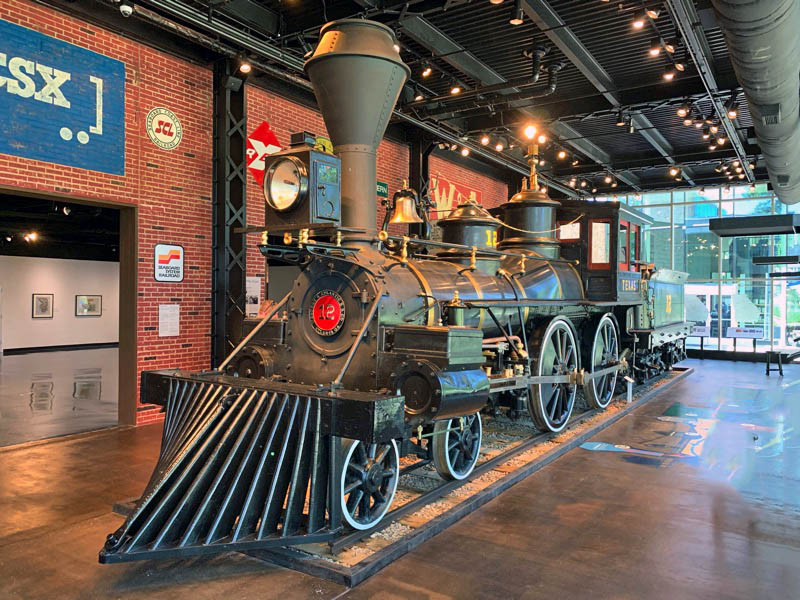
Western & Atlantic #12 "Texas"
Atlanta, Ga / Sep 2019 / RWH


Western & Atlantic #12 "Texas"
to East Tennessee & Virginia
to United States Military Railroad
to Western & Atlantic #49
renamed "Cincinnati"
to Nashville Chatta. & St Louis #212
to the City of Atlanta
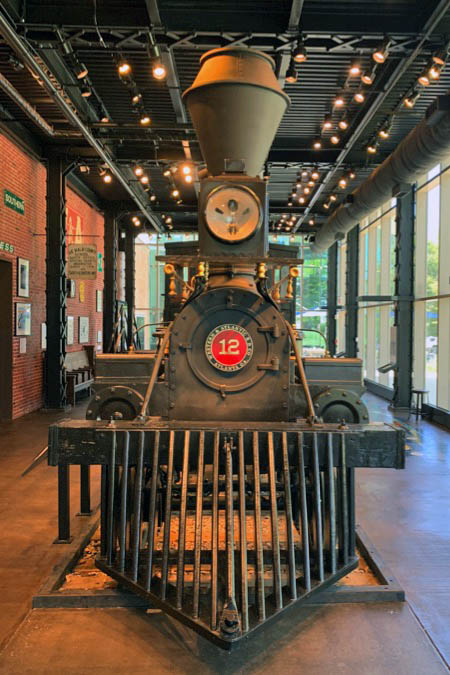
Sep 2019 / RWH
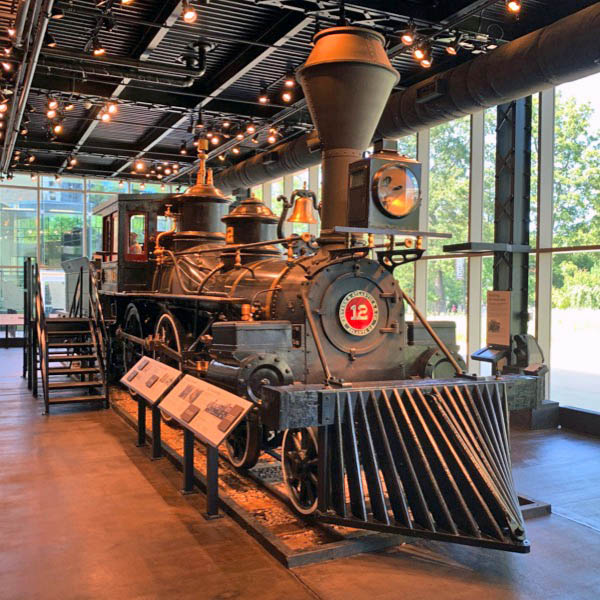
Atlanta, Ga / Sep 2019 / RWH
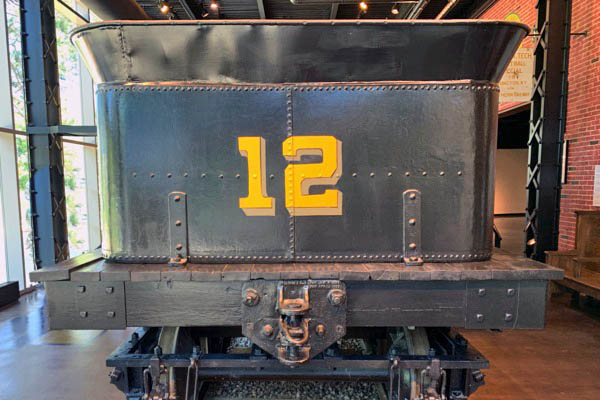
Sep 2019 / RWH
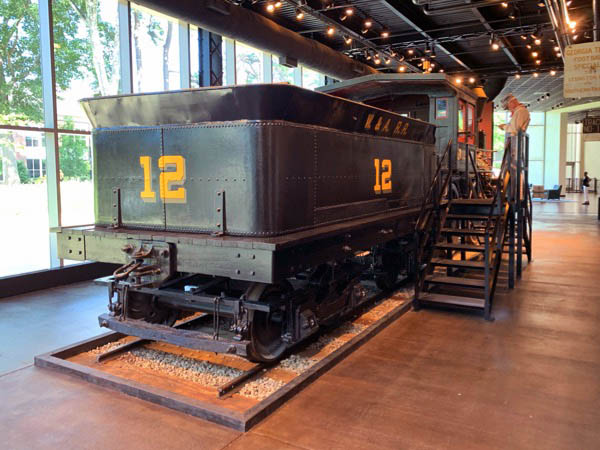
Atlanta, Ga / Sep 2019 / RWH
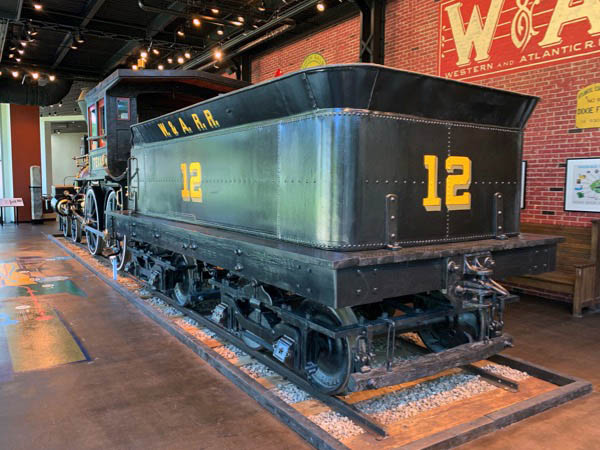
Atlanta, Ga / Sep 2019 / RWH
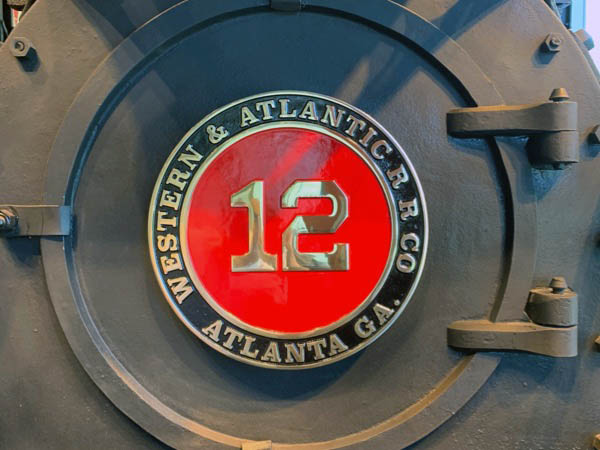
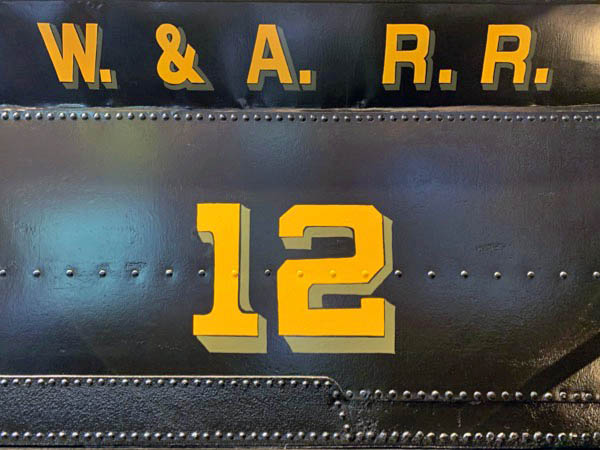
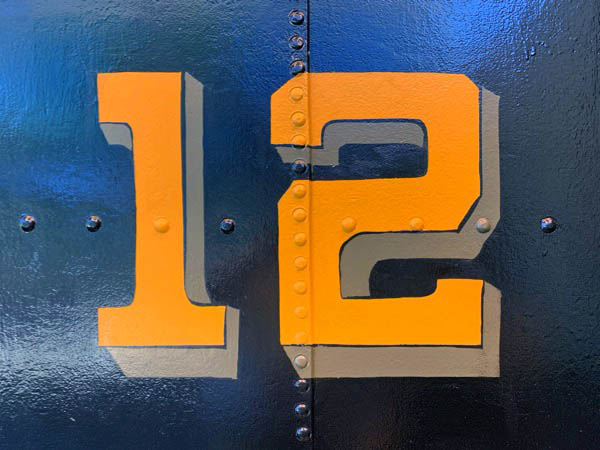
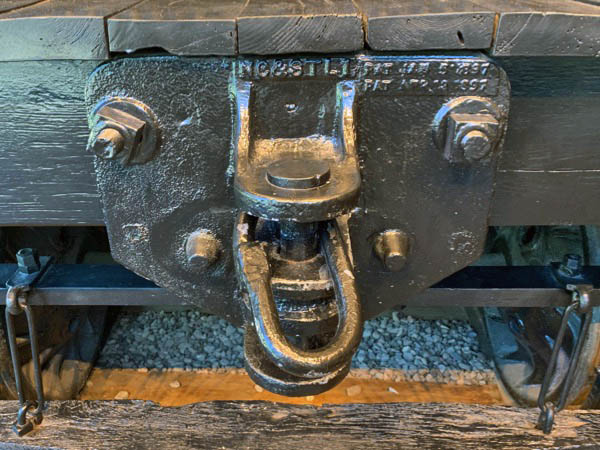
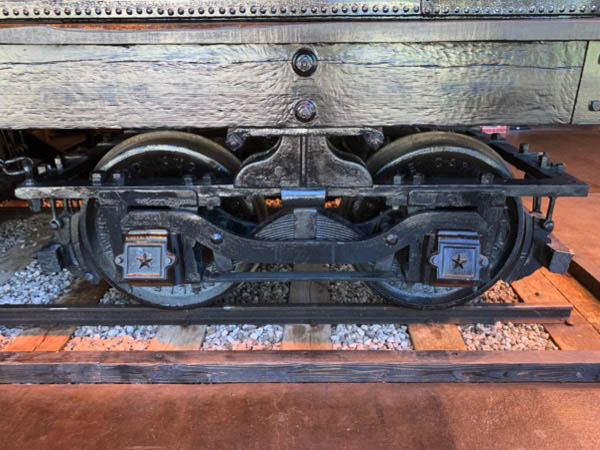
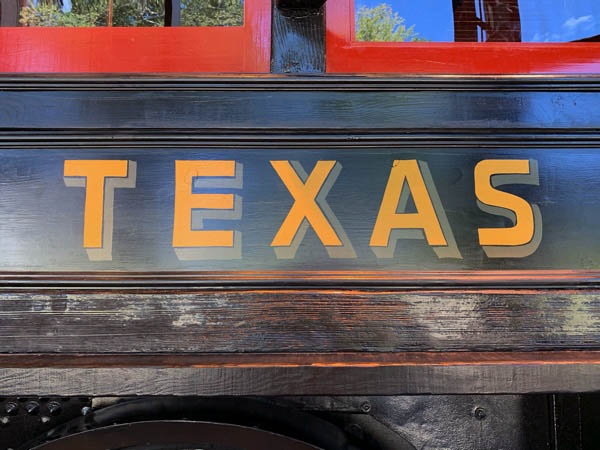
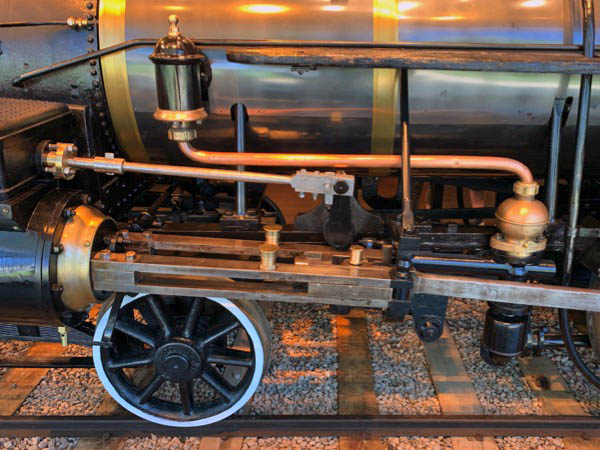
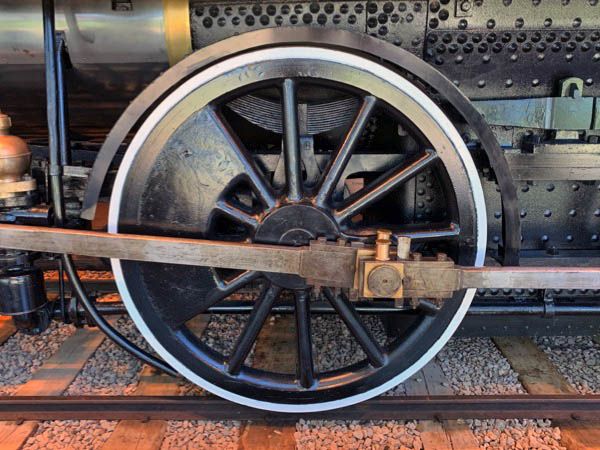
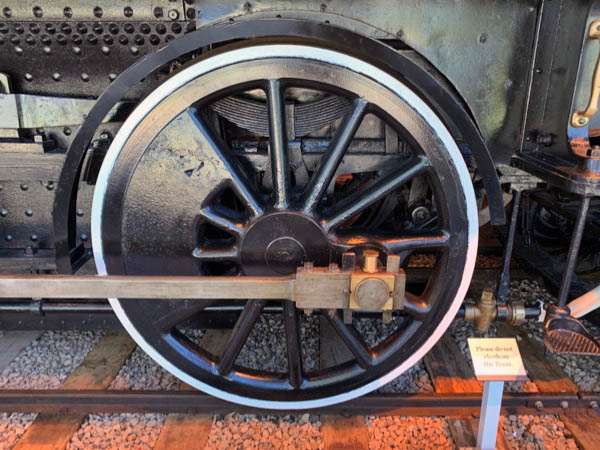
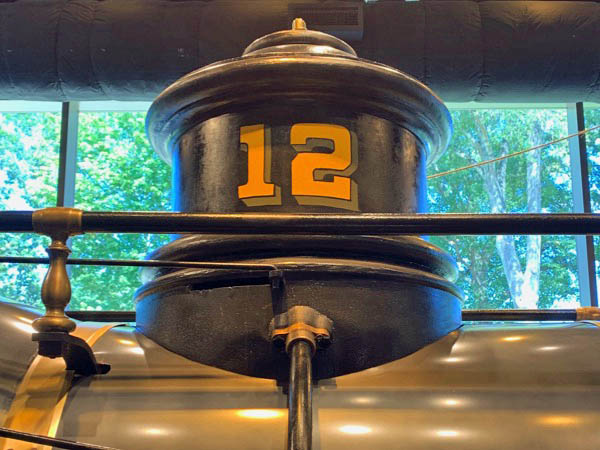
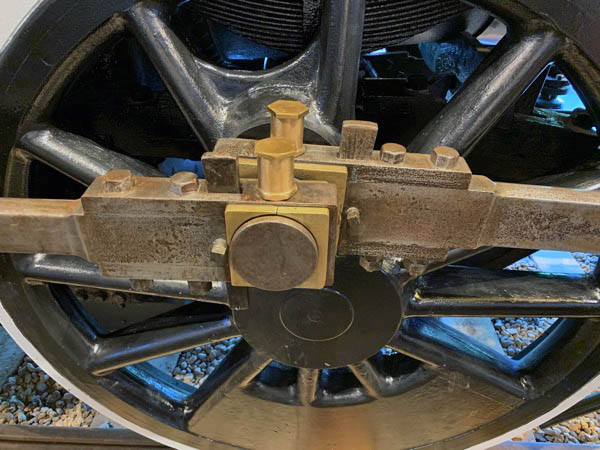
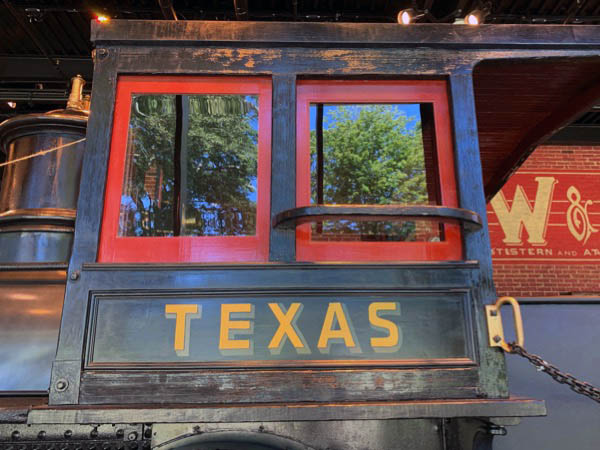
Sep 2019 / RWH
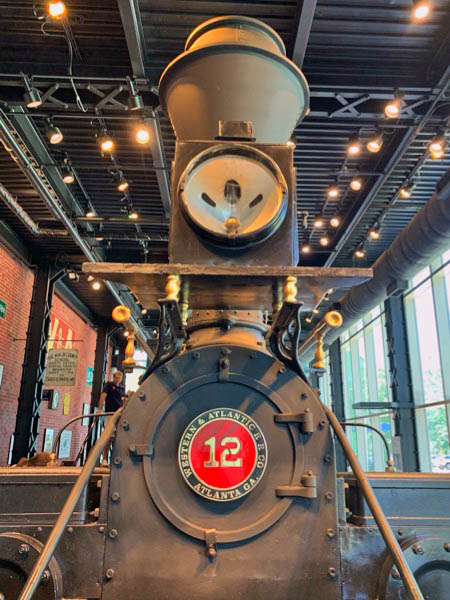
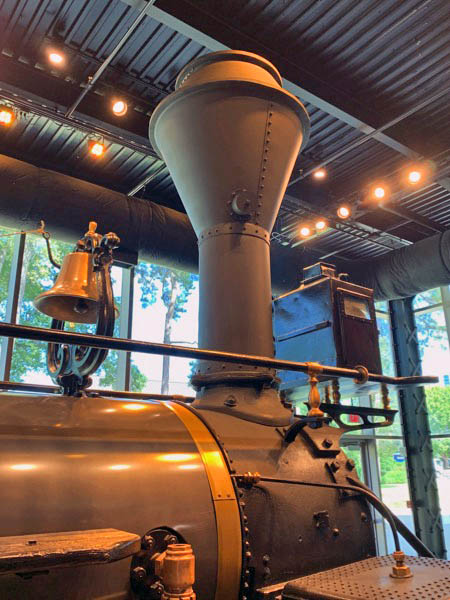
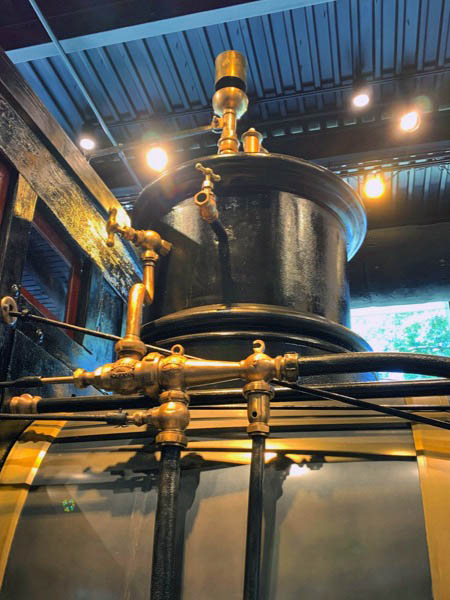
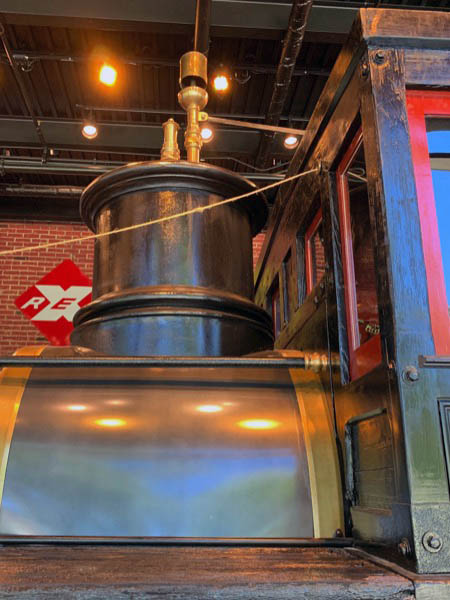
Sep 2019 / RWH


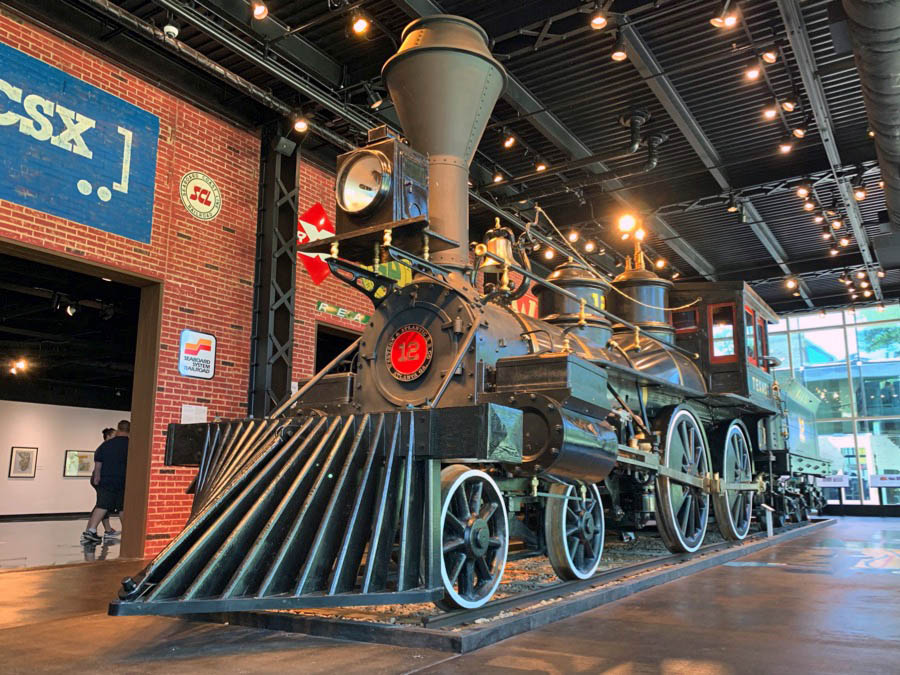
Atlanta, Ga / Sep 2019 / RWH
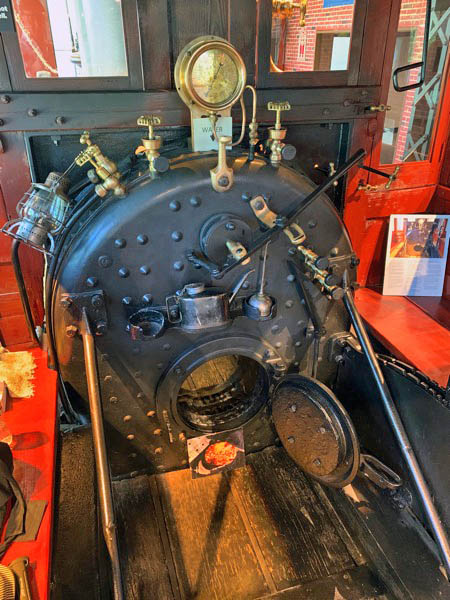
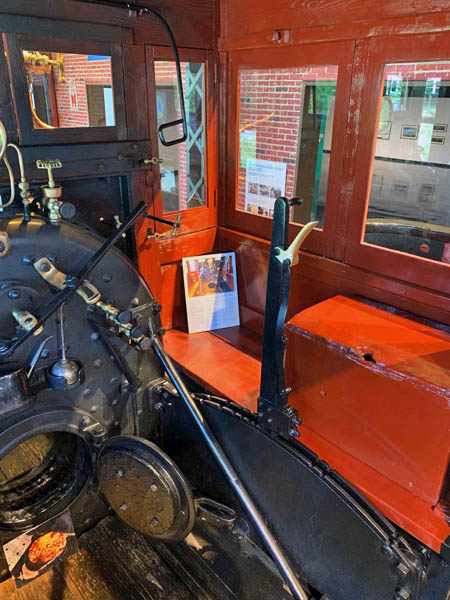
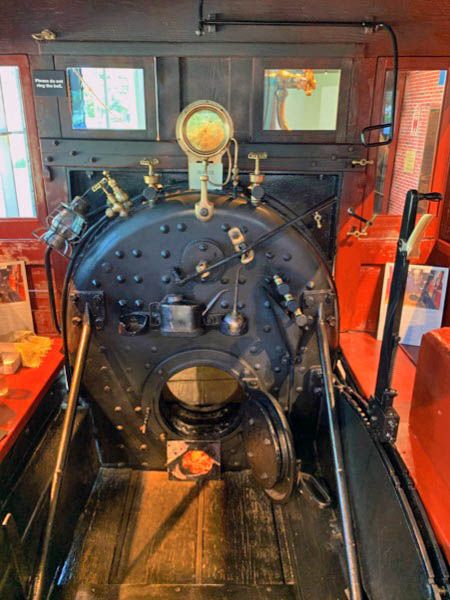
Sep 2019 / RWH
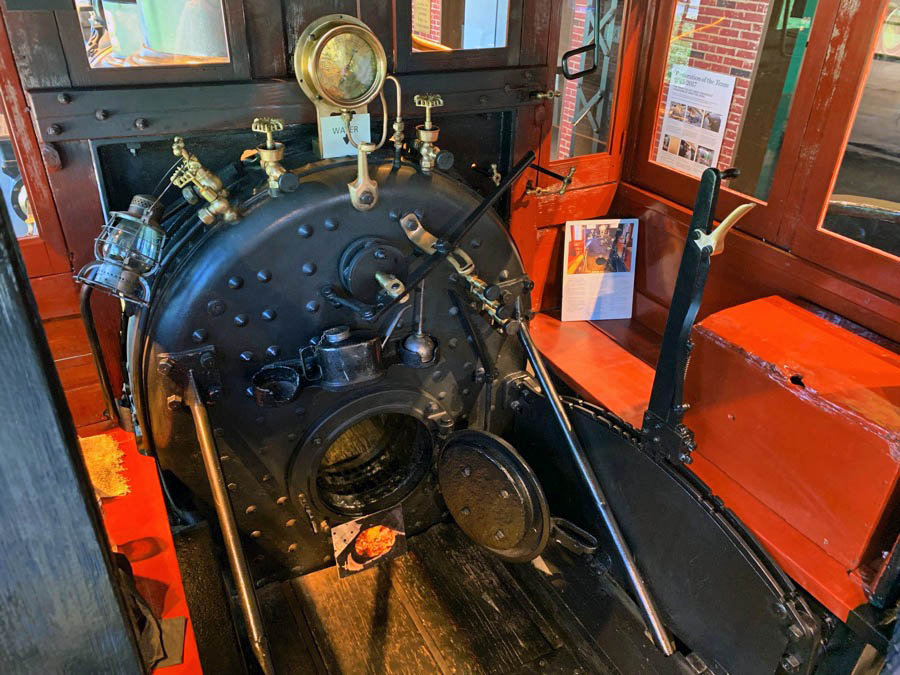
Sep 2019 / RWH
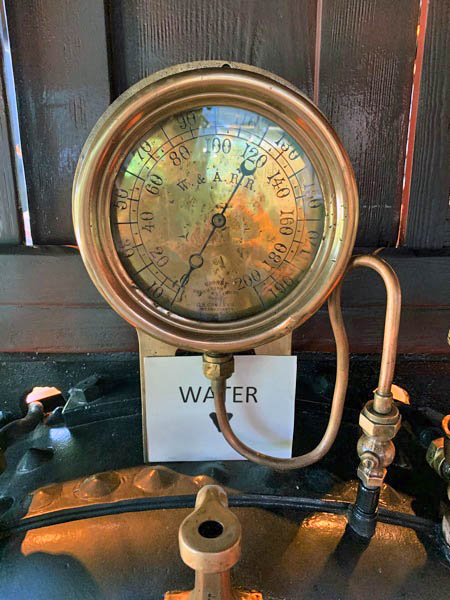
Sep 2019 / RWH
 Locations
Locations
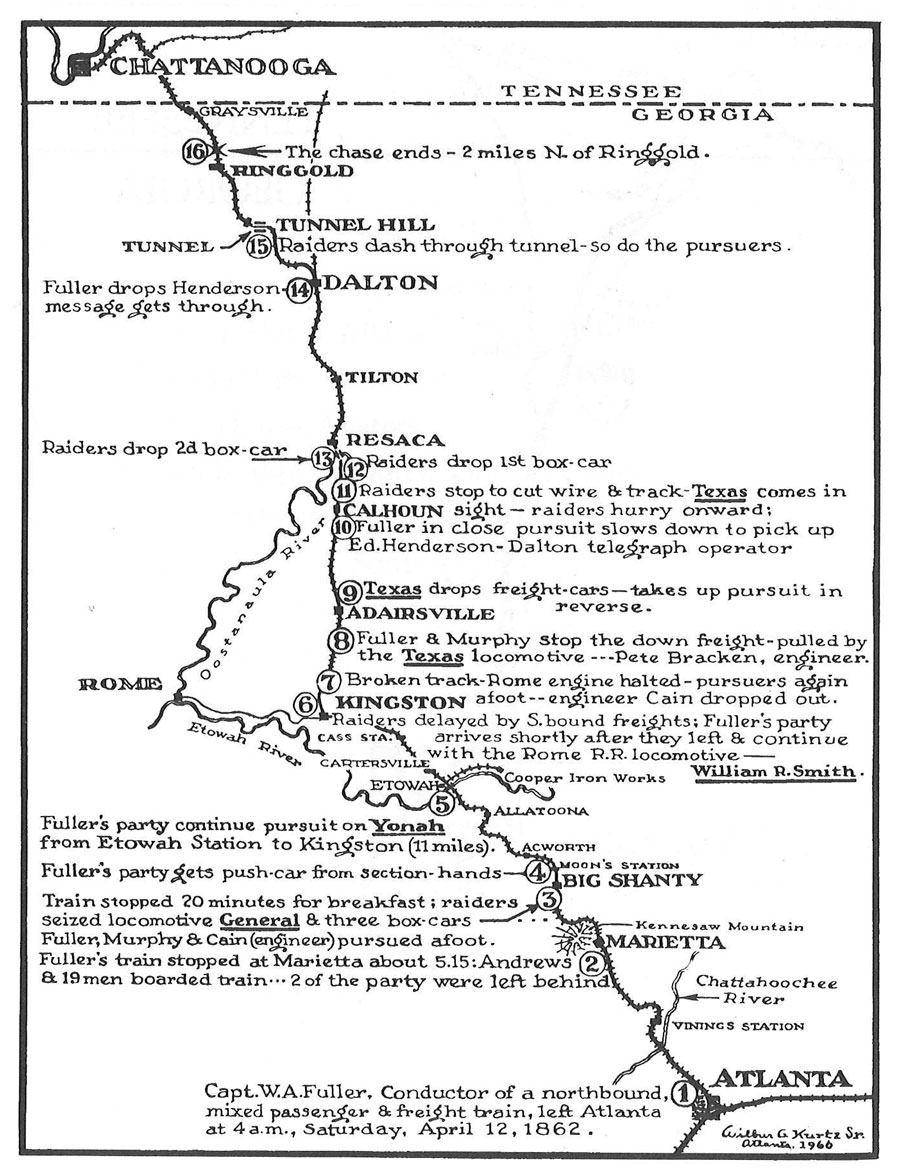
collection
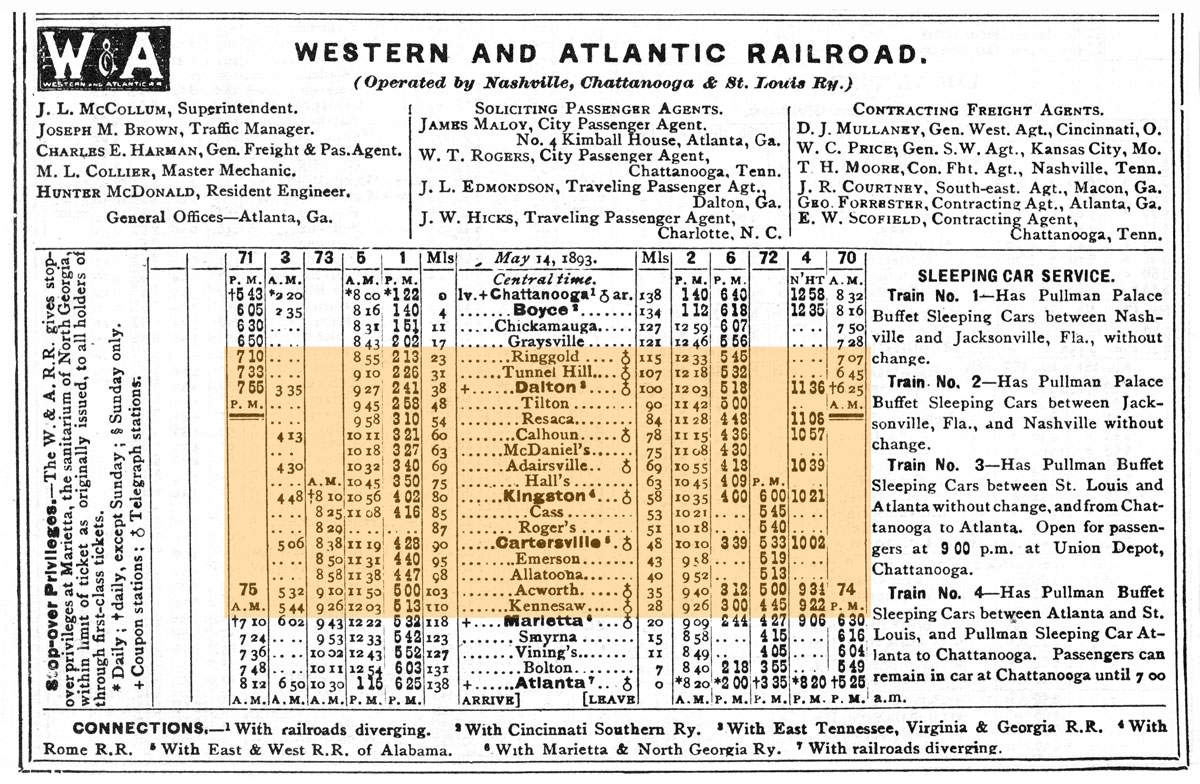
1893 Official Guide ad / collection
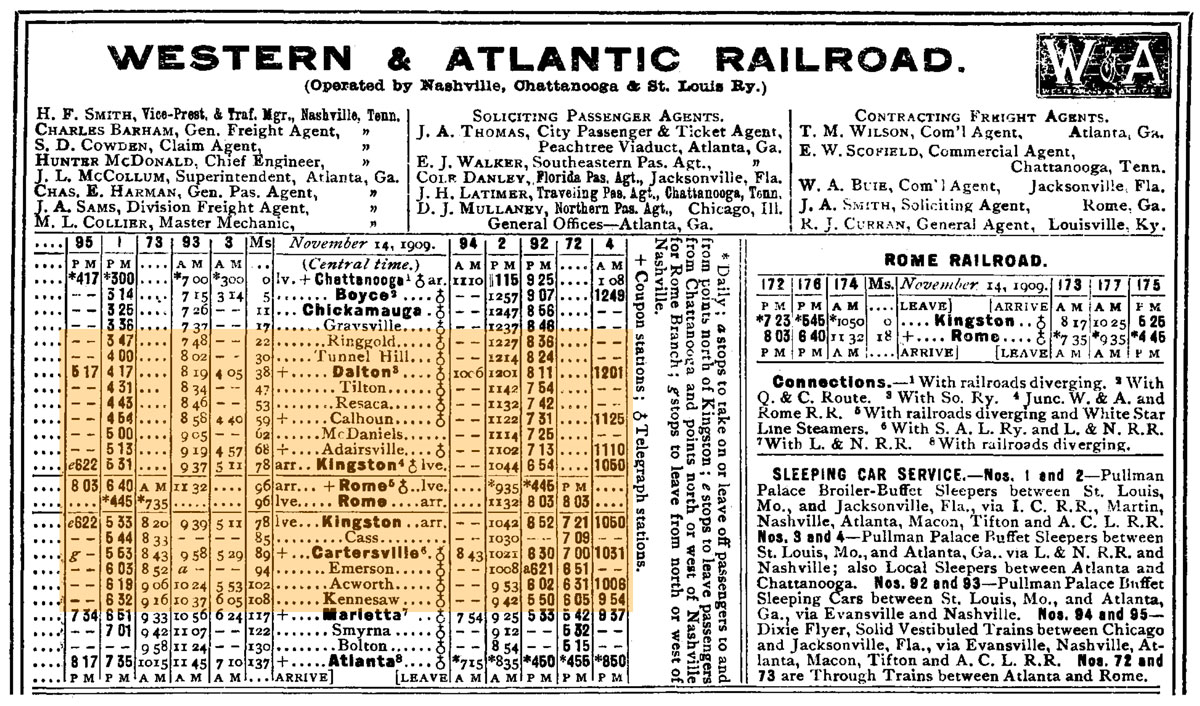
1910 Official Guide ad / collection
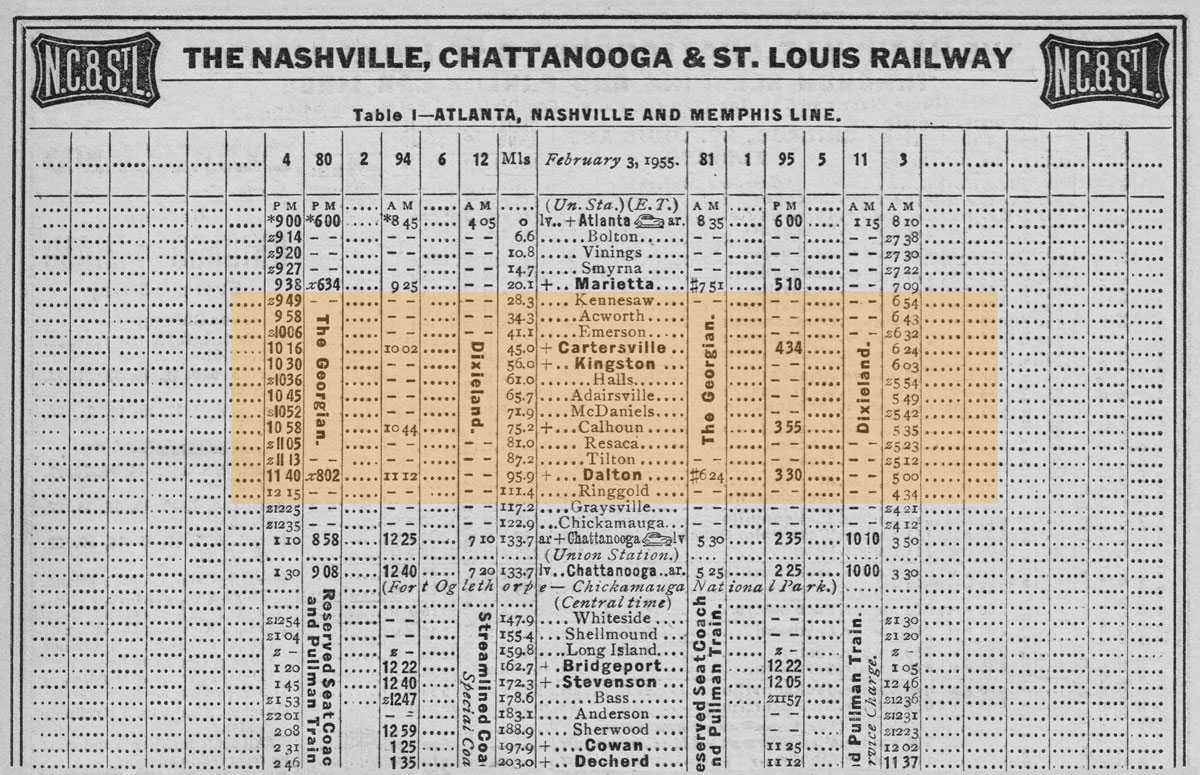
1955 Official Guide ad / collection
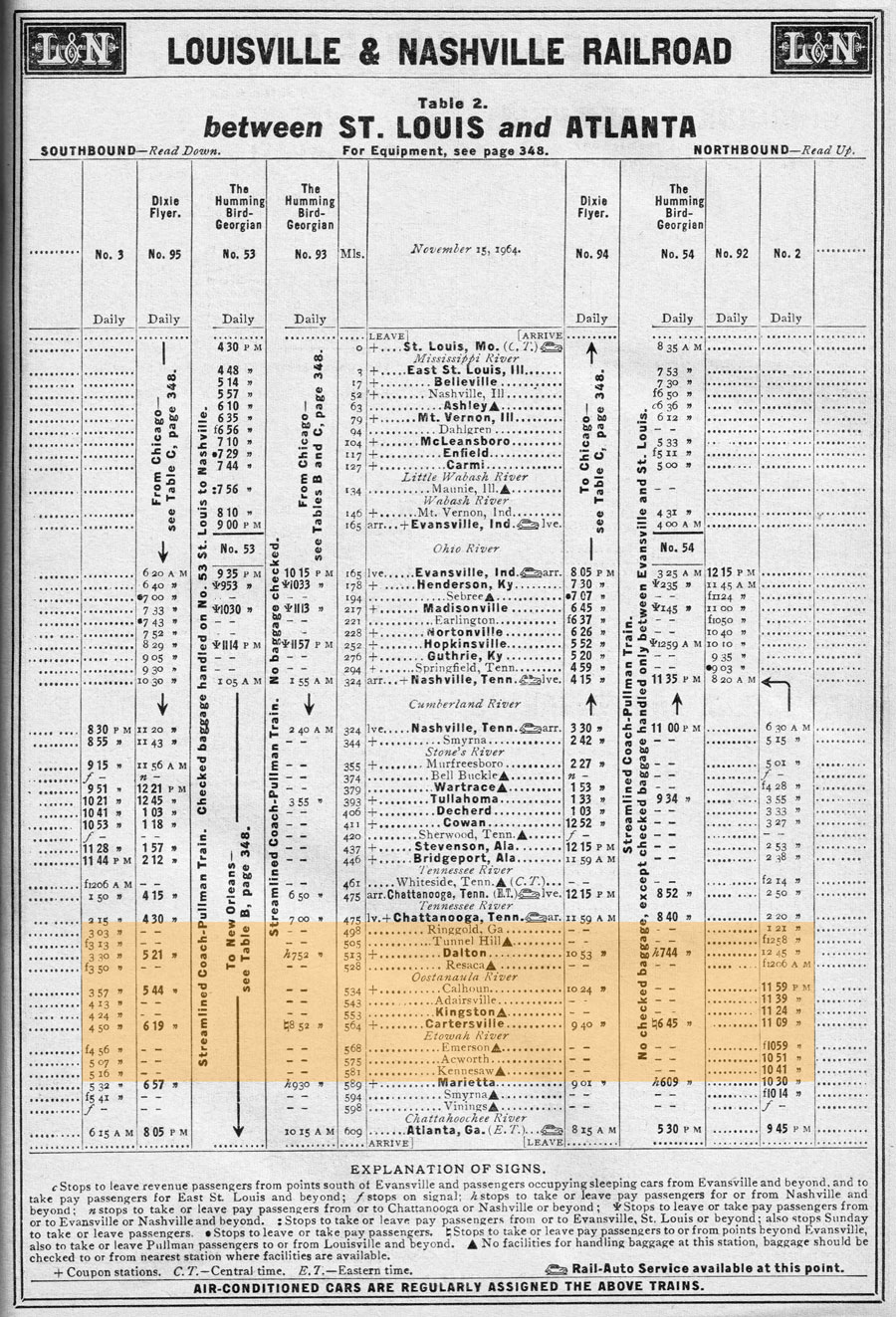
1965 Official Guide ad / collection
 Kennesaw
Kennesaw

 April 12, 1862: James J. Andrews and a band of Yankee spies boarded the northbound train at Marietta. This train was powered by the locomotive, The General. At Big Shanty, the crew and passengers left the train to eat breakfast at the Lacy Hotel. In plain view of the soldiers at Camp McDonald, Andrews and his men stole The General and headed north to destroy the Western and Atlantic Railroad. But they did not count on the persistence of William A. Fuller, the conductor, who chased The General first on foot before running it down north of Ringgold, Georgia on the locomotive Texas (which ran in reverse). This incident forever placed Big Shanty on the map.
April 12, 1862: James J. Andrews and a band of Yankee spies boarded the northbound train at Marietta. This train was powered by the locomotive, The General. At Big Shanty, the crew and passengers left the train to eat breakfast at the Lacy Hotel. In plain view of the soldiers at Camp McDonald, Andrews and his men stole The General and headed north to destroy the Western and Atlantic Railroad. But they did not count on the persistence of William A. Fuller, the conductor, who chased The General first on foot before running it down north of Ringgold, Georgia on the locomotive Texas (which ran in reverse). This incident forever placed Big Shanty on the map.
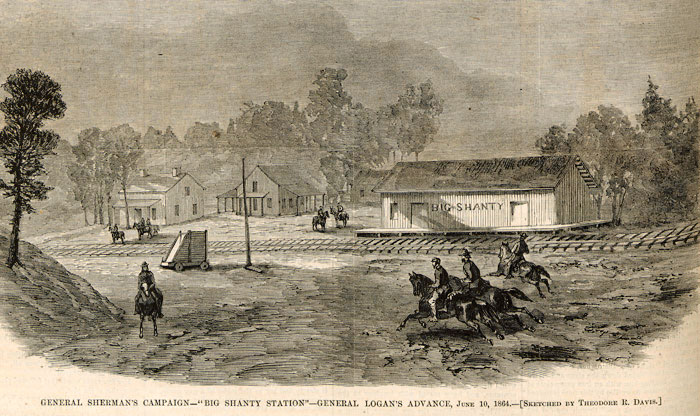
Harper's Weekly excerpt / Jul 1864 / web
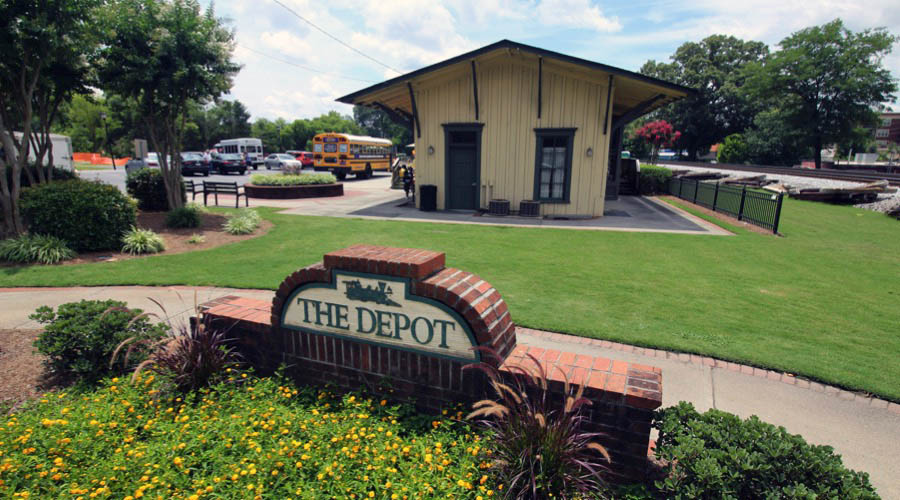
Kennesaw, Ga / Jun 2019 / RWH
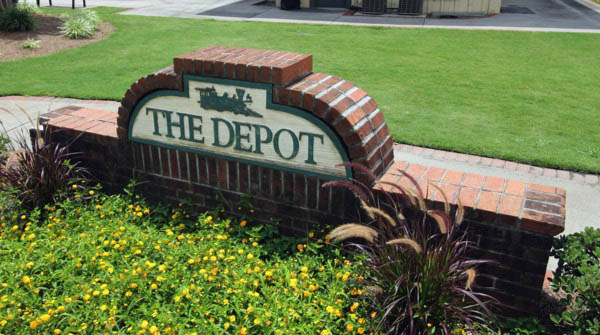
Kennesaw, Ga / Jun 2019 / RWH
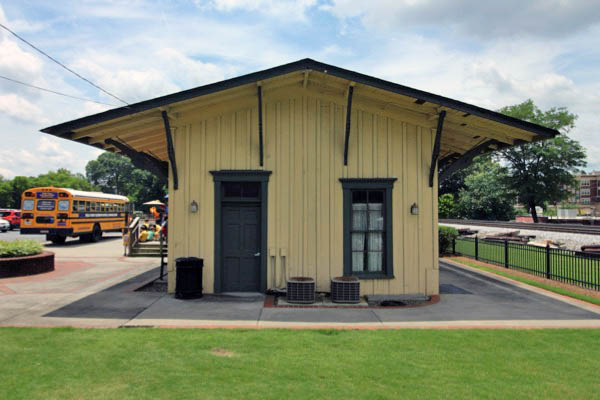
Kennesaw, Ga / Jun 2019 / RWH
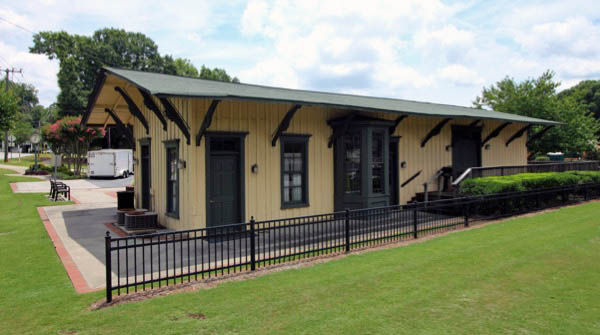
Kennesaw, Ga / Jun 2019 / RWH
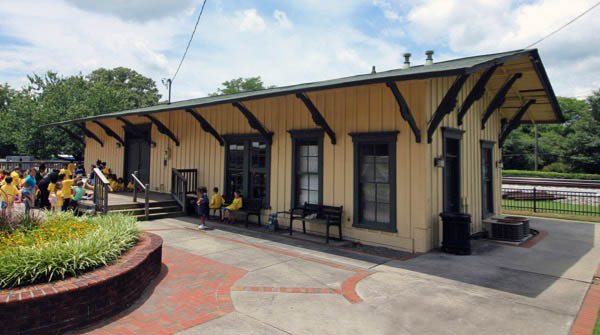
Kennesaw, Ga / Jun 2019 / RWH

Click to see the current Kennesaw depot area plotted on a Google Maps page
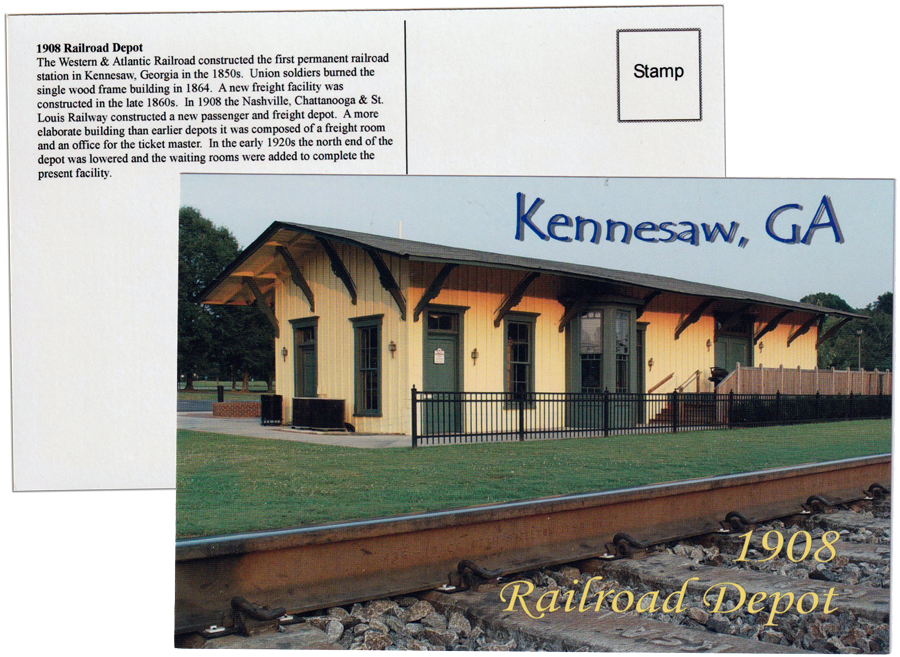
postcard / collection
 Ringgold
Ringgold

 Approximately 1 mile north of the Ringgold Depot on the former Western & Atlantic Rail line, a monument marks the final stop of the great Locomotive Chase that began in April of 1862. A group of Union soldiers called "Andrew's Raiders" hijacked a Confederate train and attempted to destroy the rebel rail network across northwest Georgia. After running out of steam, the train engine came to a stop just north of Ringgold where the Union soldiers attempted to escape the now pursuing locals. For their actions, some of the surviving members of Andrew's Raiders were awarded the then newly created, Medal of Honor.
Approximately 1 mile north of the Ringgold Depot on the former Western & Atlantic Rail line, a monument marks the final stop of the great Locomotive Chase that began in April of 1862. A group of Union soldiers called "Andrew's Raiders" hijacked a Confederate train and attempted to destroy the rebel rail network across northwest Georgia. After running out of steam, the train engine came to a stop just north of Ringgold where the Union soldiers attempted to escape the now pursuing locals. For their actions, some of the surviving members of Andrew's Raiders were awarded the then newly created, Medal of Honor.
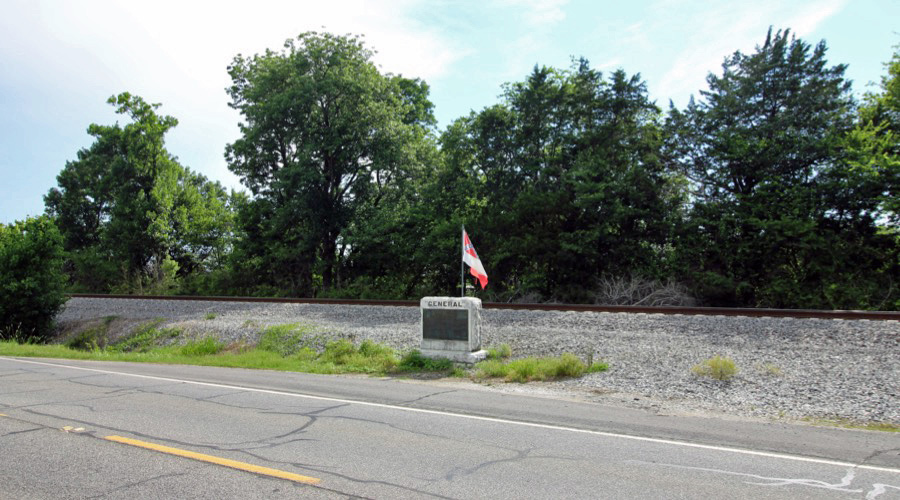
Ringgold, Ga / Jun 2019 / RWH

Click to see the Ringgold Chase monument plotted on a Google Maps page
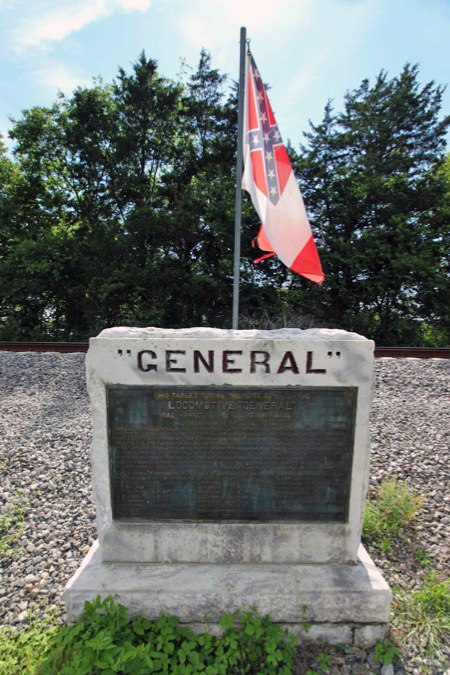
Jun 2019 / RWH
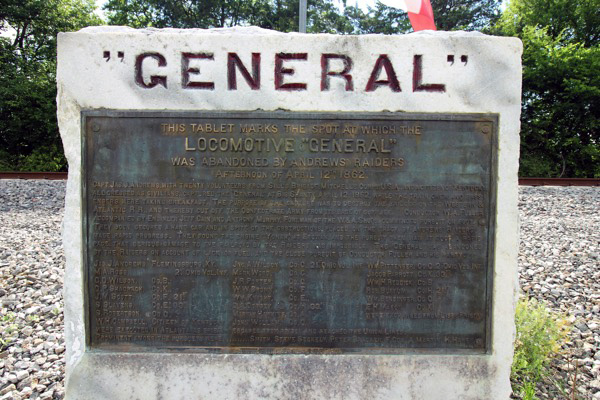
Jun 2019 / RWH
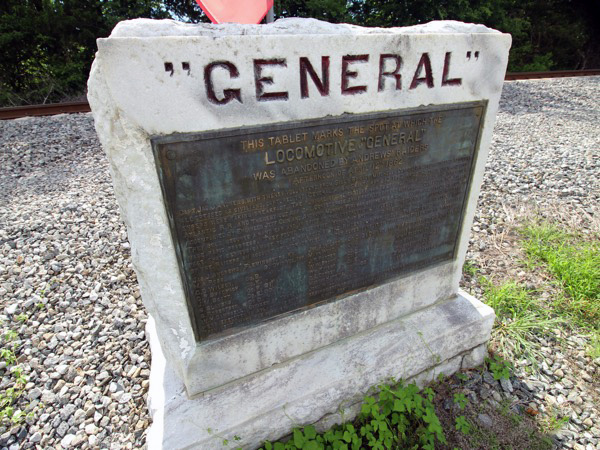
Jun 2019 / RWH
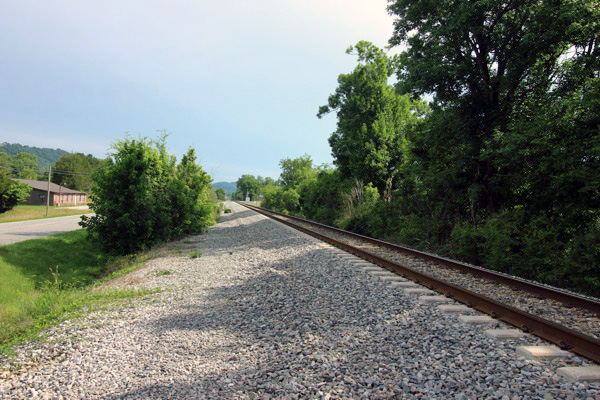
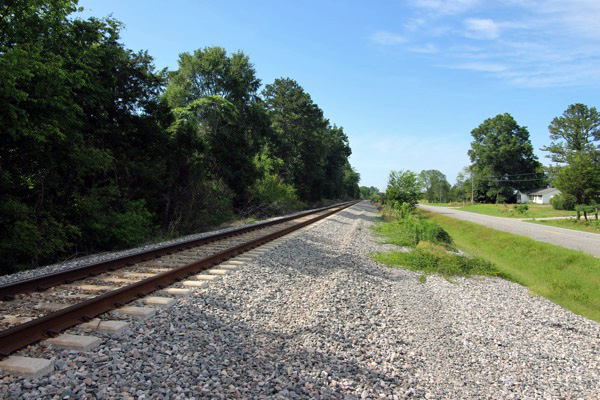
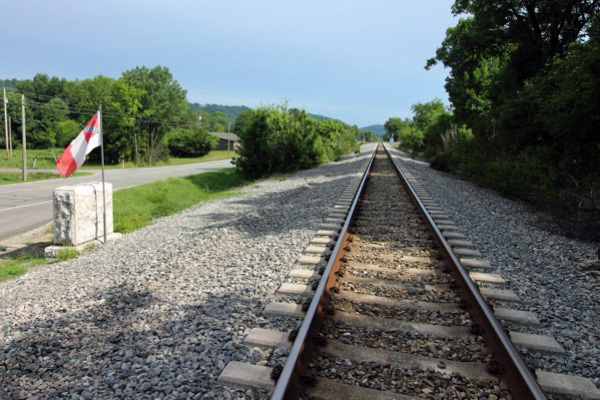
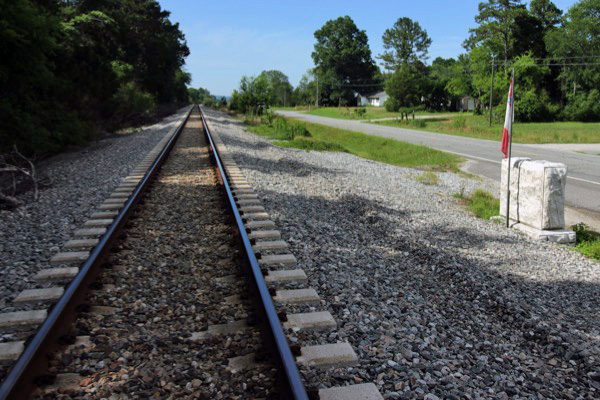
Ringgold, Ga / Jun 2019 / RWH
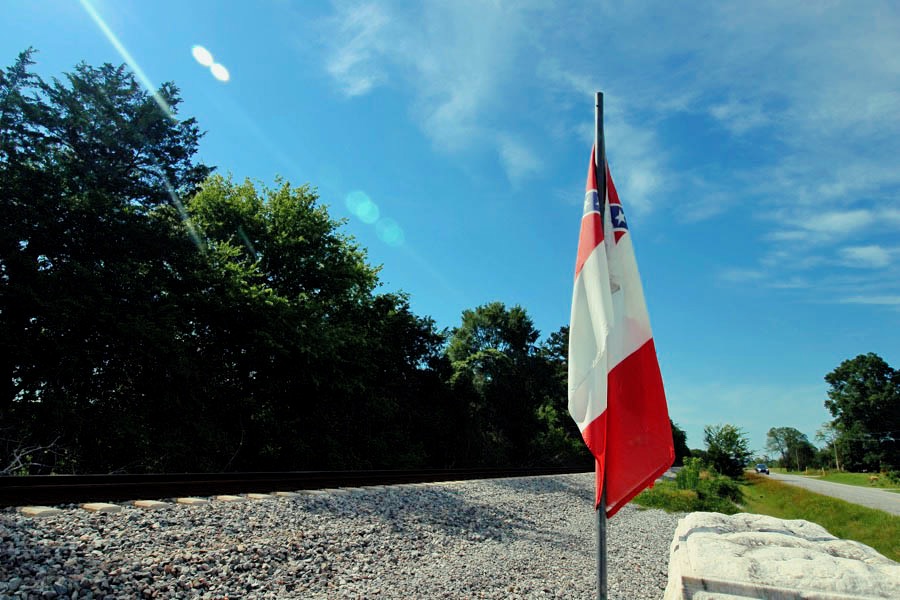
Ringgold, Ga / Jun 2019 / RWH
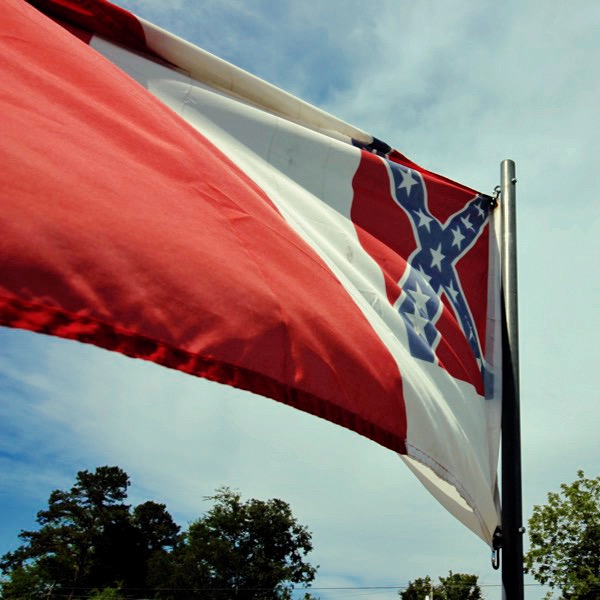
Jun 2019 / RWH
 Clippings
Clippings

RWH
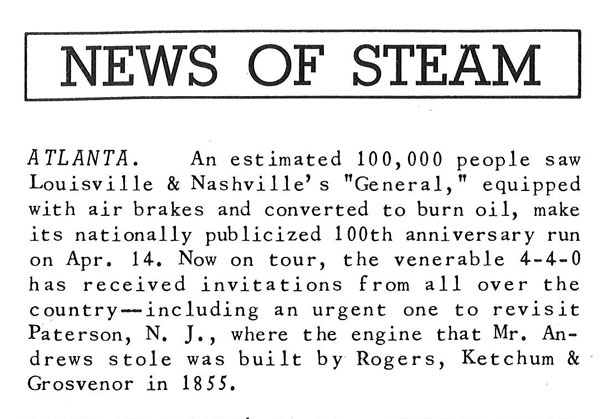
from Steam Locomotive & Railroad Tradition #11 - May 1962 / collection
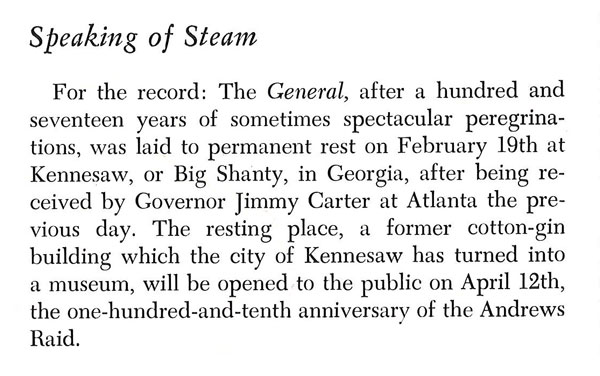
from Railroading magazine #42 - Jan 1972 / collection
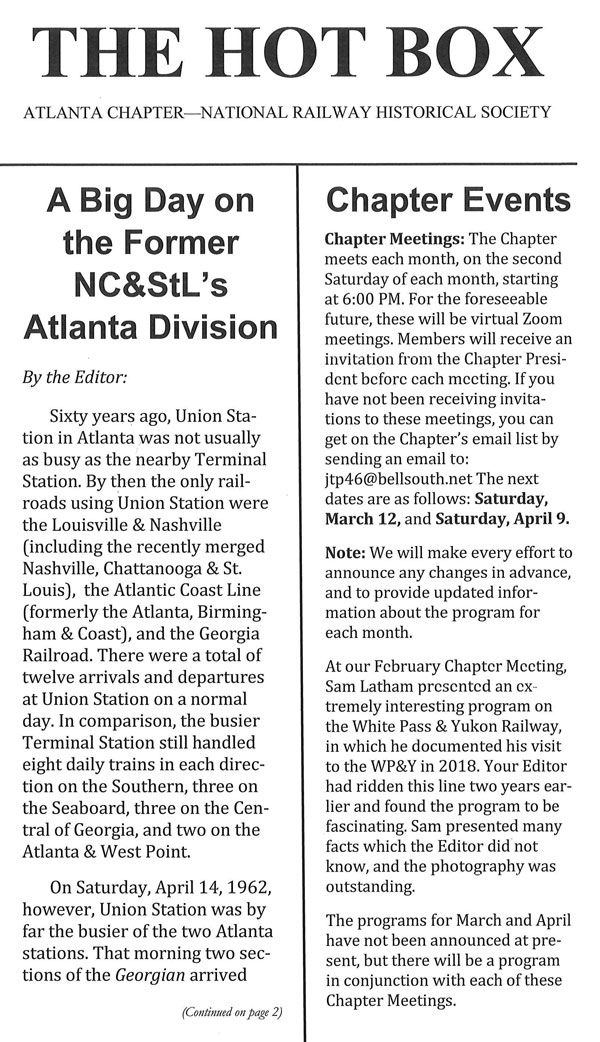
from Atlanta NRSH Hot Box newsletter - Mar 2022 / collection
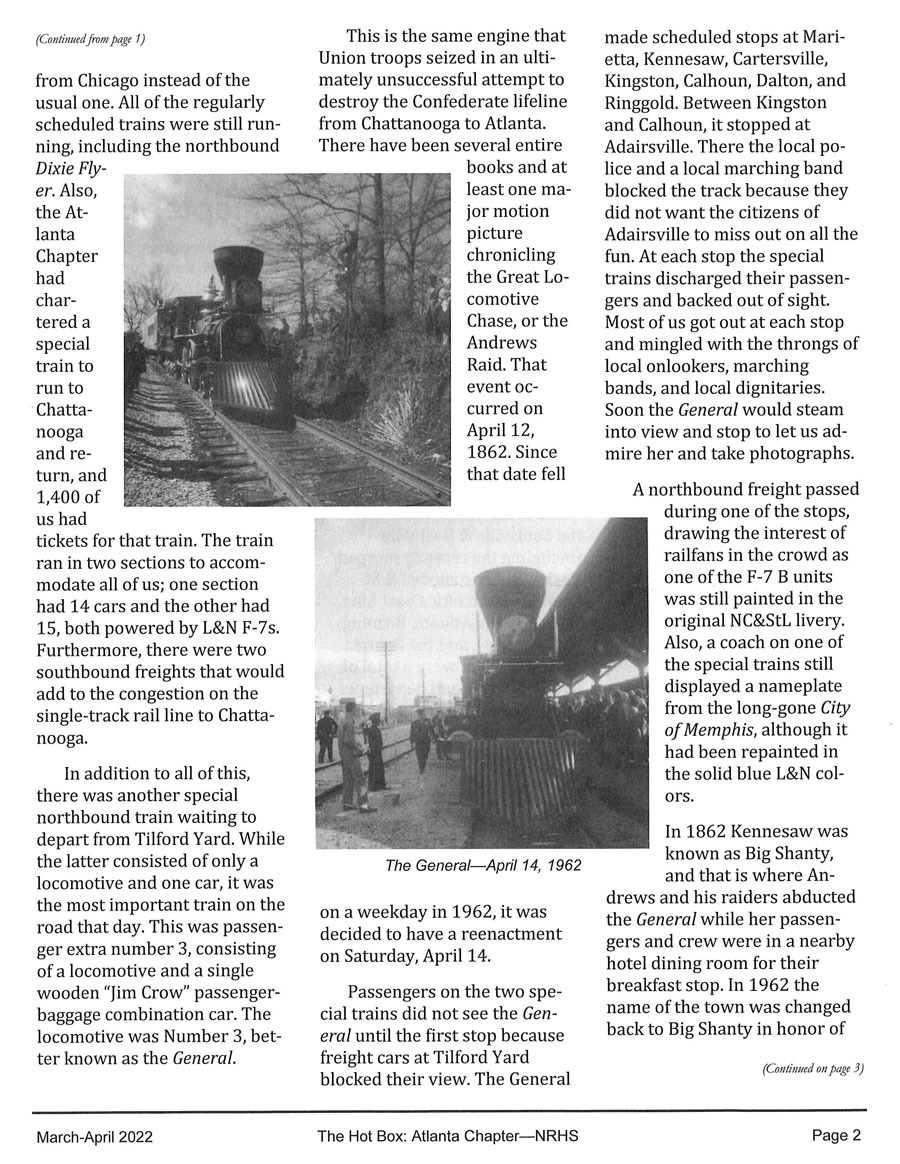
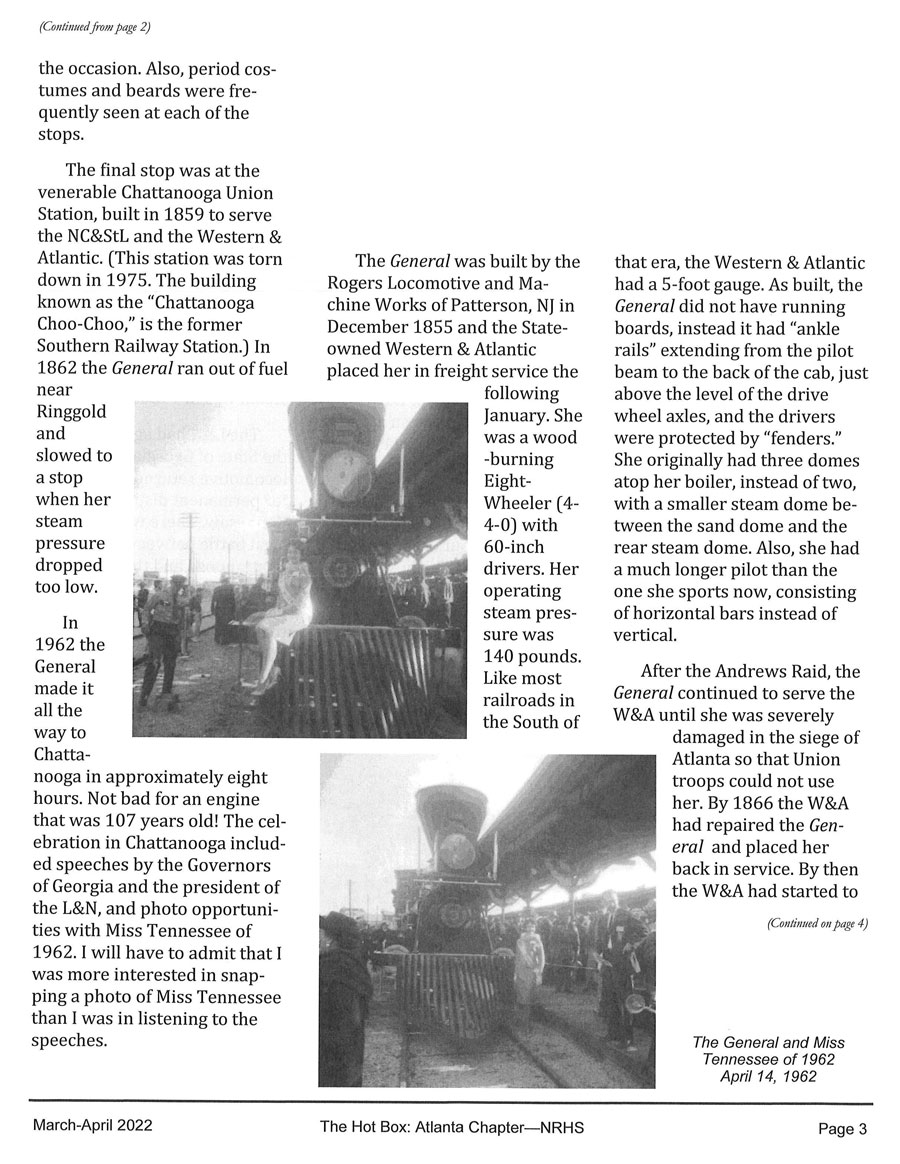
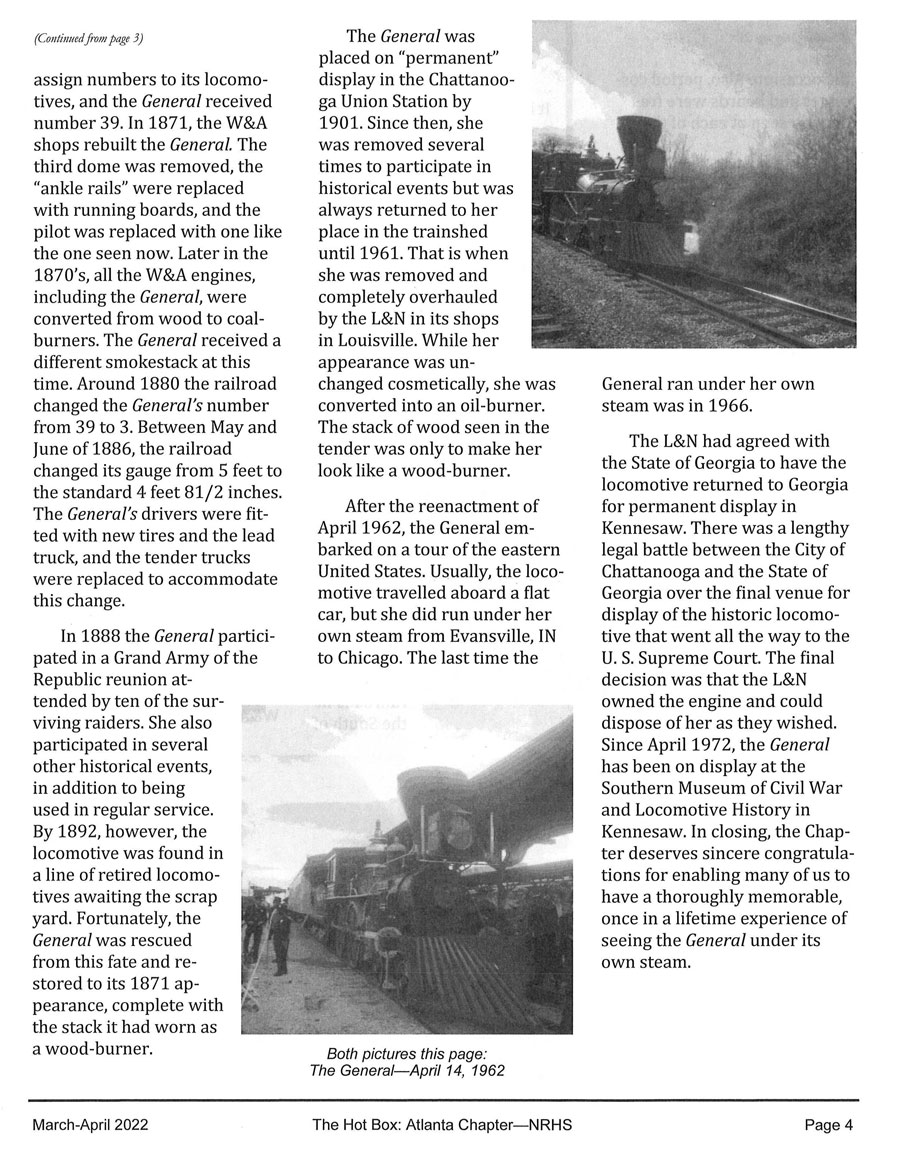
Links / Sources
- Wikipedia article for Great Locomotive Chase
- The Great Locomotive Chase: About North Georgia
- Railfanning.org - The Andrews Raid
- Joe F. Head, The General: The Great Locomotive Dispute (Bartow History Center, 1997)
- Geo. B. Abdill, Civil War Railroads (Superior Publishing, 1961)

